Latest in Campaign 2024

VIDEO: A conversation with Rep. Jan Schakowsky
Congresswoman Schakowsky (D-Ill.) speaks with Medill News Service reporter Simone Garber in an exclusive interview.
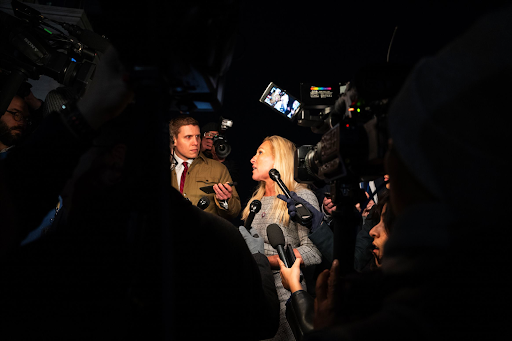
Listen: Exploring the media’s role in today’s polarized politics
As digital platforms redefine news consumption habits, several outlets face challenges in maintaining trust from partisan audiences. The internet and social media have intensified sensationalism and polarization.
read more
Video: Voters apathetic about the 2024 presidential election
The 2024 presidential election is the first presidential rematch since 1956, but voters express skepticism about their choices.
read moreLatest in Politics

Challenges to press freedom: Journalists under fire for protecting source confidentiality
Journalist Catherine Herridge is among those who support the PRESS Act.
read moreWomen veterans’ healthcare under spotlight: Senate Committee reviews VA programs
WASHINGTON — Representatives on the Senate Committee on Veterans’ Affairs on Wednesday reviewed the effectiveness of Department of Veterans Affairs programs to ensure equity for women veterans.
According to Erica Scavella, Assistant Under Secretary for Health for Clinical Services at the Department, the number of women veterans using veteran services has tripled since 2001 and now exceeds 625,000. However, as the Office of Inspector General reported, the growing number of veterans poses challenges to VA healthcare in ensuring access to women’s primary care providers and gender-specific care in their facilities and the community.
“We have confirmed that a facility for women’s veterans’ healthcare program was under-resourced and largely overlooked,” said Deputy Assistant Inspector General Jennifer Baptiste.
Yet, programs are not running at full capacity. According to the Office of Women’s Health, only 40 to 45 percent of eligible women veterans use Veterans health care benefits.
Sen. John Boozman, R-Ark., stressed the need for a new VA healthcare culture that welcomes women veterans and makes them feel like they belong.
“It’s long overdue that we update the belief that when a woman seeks care at the VA, it’s because her husband is a veteran,” he said.
Meanwhile, Ranking Member Jerry Moran, R-Kan., highlighted another area for improvement – military sexual trauma (MST) survivors’ support.
Scavella reported approximately 30 percent of women veterans have experienced MST, and the number might be underreported. Still, data from the Office of Inspector General indicates that MST claims need to be processed with a higher accuracy rate and in a timely manner.
“Having a claim approved is a powerful healing tool. It’s the equivalent of a guilty verdict in court,” said veteran witness Alissa Engel. “We must enact the necessary changes to create an impeccable trauma-informed claims processing procedure.”
Sen. Richard Blumenthal, D-Conn., raised another concern, quoting from the report on women veterans mental wellness by the Disabled American Veterans: in 2021, the suicide rate for women veterans increased by 24 percent, and more than half of the deaths for women veterans are caused by self-inflicted firearm injuries.
The lethal means safety campaigns by the VA are not enough to save the lives of women veterans, said Naomi Mathis, Assistant National Legislative Director at Disabled American Veterans. She stressed that the VA failed to persuade some of the veterans why they needed to keep their firearms safely stored.
Other recommendations presented to the VA by the nonprofit representatives were enhanced accessibility to the healthcare facilities, increased budgeting for direct care workers, and greater outreach to the veterans during the post-deployment transition period.
Sen. Angus King, I-Maine, summed up the committee hearing by reiterating that the VA “cares deeply about the veterans.” He suggested that improved communication between governmental and non-governmental organizations and shared experiences will lead to effective solutions.
Small businesses waiting for Congress to take tax relief action
WASHINGTON — Key provisions of the Tax Cuts and Jobs Act (TCJA) are set to expire after the end of 2025, Rep. Roger Williams, R-Texas, chairman of the House Committee on Small Business said in a Wednesday hearing. He added that the future of American small business is uncertain as they wait for Senate action to pass the bipartisan bill which was proposed in January.
Congress passed the TCJA in 2017. According to Williams, it included the most significant changes in the tax code in decades. He said those changes helped business revenue go up and generated the highest single year increase in government revenue since 1977. The TCJA also contributed to improving household finances, with median household income rising by $5,000 in the two years post-enactment.
Several of its provisions will automatically expire if Congress does not act to extend or amend them after a certain period of time.
Williams said this will potentially hinder business operations as America’s job creators continue to face harsh economic hardships which have significantly impacted the nation’s small businesses.
“We must ensure that the tax code works for business owners, not against them,” he said.
Raymond Huff, a small business owner, said that he is concerned with the potential expiration of tax provision 199A.
“Many small businesses, including mine, need the 199A tax provision to stick around so we can get healthy again,” he said.
He added that the prospect of losing the benefits of this tax law is troubling.
“If my business is faced with a significant tax increase at the end of next year, it will set my business back in a way I can’t afford, or plan for a 20% or higher increase which will require me to slow or cancel my store openings and hiring plans in the future,” he said.
Rep. Aaron Bean, R-Fla., said the provisions of this bill have a track record of increasing wages, providing more job opportunities and helping American businesses become more competitive, more productive, and more innovative.
He added that this in turn generates a tremendous economic boom in communities.
“I believe the tax relief for American families and workers will provide many relief opportunities,” he said.
Rep. Morgan McGarvey, D-Ky., said small businesses in the tax code must be simple, fair and must promote job creation in America. He added that America needs a tax code that is accessible to every American and everyone needs to pay their fair share.
“It is not viable and fair that the top 10% earners are oftentimes taxed at far less than teachers, firefighters, and people below,” he said.
Huff added that without the protection of tax provision 199A, larger competitors would gain an unfair advantage, as they would benefit from a better effective tax rate.
“This imbalance in the marketplace goes against the principles of fair competition and undermines the role of small businesses as the backbone of the U.S. economy,” he said.
Walter Rowen, president of Susquehanna Glass Company in Columbia, Pennsylvania and co-chair of America Small Business Future, said the failure to support small business growth represents a missed opportunity to create jobs, raise wages, and empower entrepreneurs to contribute to the vitality of their communities.
He said extending the TCGA provisions beyond 2025 would lock in a tax system that does not invest in small business growth or resilience.
“We need to take this opportunity to create and pass tax reform that supports small business success, closes loopholes and ensures everybody pays the same or fair tax rates,” he said.
Huff said members of Congress need to recognize the urgency of this pending tax increase and take action to allow for proper business planning.
“The business community needs certainty, especially small businesses like mine. Waiting to resolve this issue would certainly not be as beneficial as extending and making those tax provisions permanent now,” he said.
Latest in Education
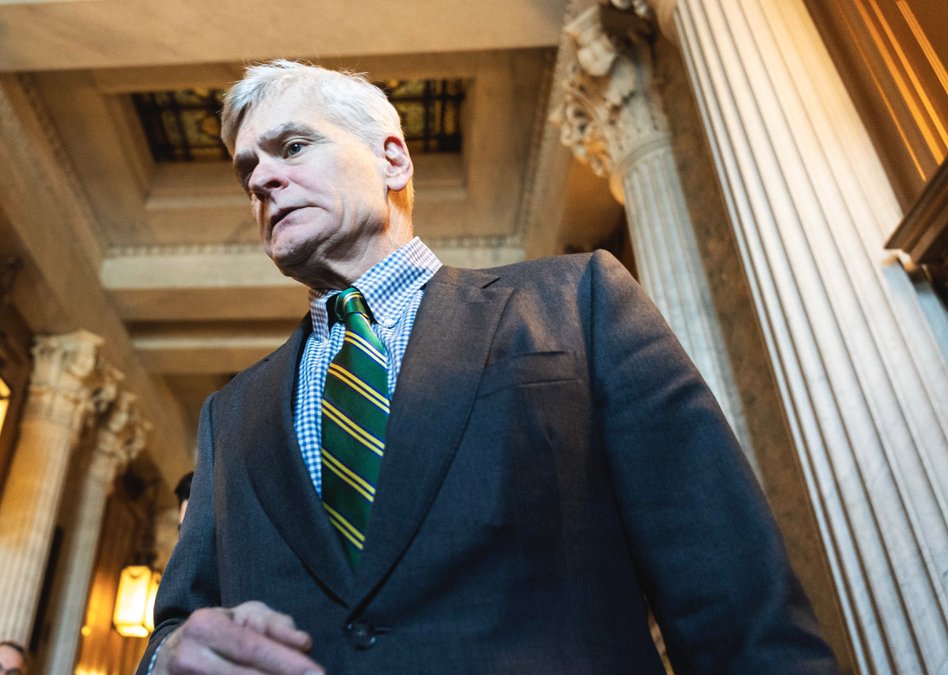
Republican senators slam delays for student financial aid forms
The Department of Education announced that colleges and universities will begin receiving the information from the Free Application for Federal Student Aid, or FAFSA, months after the expected date.
read moreAhead of DEI ban, UTD grapples with student expression, transparency
For 15 years, three large boulders located on the University of Texas at Dallas campus were used to publicize events, display art and present political messages.
After Hamas’ Oct. 7 terrorist attack of Israel, which killed about 1,200 people, and Israel’s subsequent assault on Gaza, which has killed more than 17,000 Palestinians, the boulders – dubbed the Spirit Rocks – became a campus hot spot in the pro-Israeli and pro-Palestinian student messaging campaign. Sometimes, these designs changed in a matter of minutes.
At 2:16 a.m. on Oct. 12, the main boulder was painted with the Palestinian flag with the message, “Free Palestine.” Nine minutes later, the rock was painted over with the Israeli flag. By 2 p.m. on Oct. 12, it was split in half: the left with a pro-Israel message and the right with a pro-Palestinian message.
Student Government President Srivani Edupuganti said leading up to Thanksgiving break, political discourse around Israel and Gaza had died down, and the Spirit Rocks weren’t being painted over as frequently.
On Nov. 20, students planned to paint the Spirit Rocks for the Transgender Day of Remembrance. When they showed up, the three boulders were missing. In their place were three freshly planted trees.
“The fact that they were removed so sneakily left students under the impression that they were removed because of the Israeli and Palestinian discourse,” Edupuganti said.
In an email to students, staff and faculty, the Division of Student Affairs said the Spirit Rocks were removed because they “were not intended to be a display for extended political discourse.” The Division of Student Affairs did not respond to a request for a comment.
However, since their beginning in 2008, the Spirit Rocks have continually displayed political messages. As early as 2009, students painted the rocks to support the Iranian Green Movement. In 2011, students used the rocks to protest the arrest of Wikileaks founder Julian Assange, and in 2015, students painted a design in support of the Black Lives Matter movement.
“It seems weird that now (the Middle East conflict), for some reason, was the breaking point, even though students have been civil and peaceful,” said Junior Anika Sultana.
UTD is one of many national universities grappling with student expression amidst the conflict in Gaza.
Jade Steinberg, soon to be UTD Hillel President, said UTD has also failed to take action after antisemitic events on campus. Steinberg said someone vandalized a student’s door, which had a mezuzah, a traditional Jewish doorpost decoration. Steinberg also said a Jewish student was called a slur on the way to class, and when UTD Hillel painted the Spirit Rocks, students shouted “baby killers.”
“We’ve tried to explain to (the administration) how we don’t necessarily feel safe or heard on campus,” Steinberg said. “And so far, unfortunately, nothing has really come of that besides the removal of the Spirit Rocks.”
Steinberg said the removal “lit a new fire” under the tension at UTD. Starting on Nov. 27, the Progressive Student Coalition organized a week of protests over the Spirit Rocks’ removal. Students gathered at the former site of the rocks, painted pebbles with the Palestinian and pride flag and drew pro-Palestinian art on the sidewalk by the student center.
Sultana said students are fearful UTD may take away other platforms for student expression. Fatimah Azeem, Editor-in-Chief of The Mercury, UTD’s independent student newspaper, said although the Spirit Rocks were not the only way to exercise free speech, they were the most popular and barrier-free.
“It’s not like anything else on campus,” Azeem said. “It’s not like putting up a flier, which can be taken down or putting up a bulletin board, which you have to get pre-approval for. (The Spirit Rocks) don’t have all these layers of bureaucracy.”
Azeem said the administration has been “evasive” when students and Mercury reporters approach with questions regarding the Spirit Rocks’ removal.
She said on Nov. 29, Vice President of Student Affairs Dr. Gene Fitch hosted an event with pizza to help students relax ahead of finals week. Students asked Fitch about the decision to remove the Spirit Rocks, Azeem said.
“He literally answered with, ‘I’m standing here serving pizza, thank you,’” Azeem said.
Sultana, who is also a graphic designer and contributor for The Mercury, said UTD students have felt left in the dark when it comes to campus speech.
“At this point, it’s really frustrating because whenever we go to admin for answers, they just run,” Sultana said. “And it’s not like the student body isn’t willing to compromise with them either.”
During Homecoming Weekend, Sultana said the administration requested students stop changing the Spirit Rocks’ design during the weekend. Sultana said students respected the administration’s wishes. The administration should work with students when making decisions that will impact campus life, Sultana said.
Edupuganti said the administration did not consult Student Government when deciding to remove the Spirit Rocks, even though they were a “Student Government-supported installation.”
“(The Spirit Rocks’ removal) is something that dealt a blow to that trust in the relationship,” Edupuganti said.
Student Government Senator Avinash Chivakula said the administration’s choice to remove the Spirit Rocks is indicative of a larger problem on campus. He said the removal has further fractured the trust students have in the administration’s ability to facilitate productive conversations around nuanced political issues.
“It’s very much a lack of administrative foresight,” Chivakula said. “And we’re going to see more of that, especially with SB 17 and a further lack of administrative cohesion.”
SB 17 comes amidst a national conservative opposition to diversity, equity and inclusion efforts in higher education. The law prohibits Diversity, Equity, and Inclusion (DEI) offices at public colleges and universities.
The law also prevents institutions from asking for DEI statements; giving preferential treatment in the hiring process based on race, sex or ethnicity; and requiring participation in DEI training.
SB 17 does not affect student organizations and academic course instruction.
Chivakula, however, said the burden to foster open conversations around DEI and politicized topics will fall unfairly on students. These issues are intimate and emotional, Chivakula said, but that doesn’t mean the university’s response should be suppression.
“A campus’s job is to facilitate opportunities for students to let out those emotions because I don’t think anger is inherently a bad thing,” Chivakula said.
Steinberg said the elimination of UTD’s DEI office will make students feel less confident in the administration’s ability to support minority students. It is more difficult for Hillel UTD to feel it has “allies” within the administration, Steinberg said, especially after the antisemitic incidents.
Since SB 17’s passing, Student Government has asked the UTD administration for greater transparency and clarity around its policies, Edupuganti said. In May, the Student Government passed a resolution asking for the administration to use an “open decision-making process” and use open forums to hear students’ input.
In November, the UTD Office of Diversity, Equity and Inclusion attended a Student Government meeting and presented on what will happen to different programs once SB 17 takes effect in 2024.
In a Nov. 29 email, Benson told students, faculty and staff the Office of Campus Resources and Support will replace the Office of DEI. The new office will “enhance student community-building and support employees and employee resource groups.” In the email, Benson said details were still being ironed out.
Azeem said since that email, the administration has been receptive to questions about DEI. But due to the uncertainty around SB 17, they may not be able to provide answers, she said.
Azeem said one step the administration can take to address campus unrest is reinstating the Spirit Rocks. Edupuganti said Student Government has passed a resolution calling for the reinstatement, but it has not gone to the president’s office yet.
Chivakula said UTD should be transparent around its administrative decisions so that the school can work toward its goal, which should be to foster growth amongst its student body.
“There’s no better place to talk about these topics than a campus where people are actively trying to learn and be better,” Chivakula said.
Changes to federal rules barring widespread transgender bans delayed again, with new timeline for next year
WASHINGTON — Transgender athletes in school sports left in limbo for months finally received an updated timeline from the Biden administration on its plan to update guidelines intended to protect them from discrimination.
In April, the Biden administration proposed a draft to update Title IX to include clear guidelines to protect for transgender athletes. Title IX, which prohibits sex discrimination against students who attend schools that receive federal funding, has not previously addressed transgender student-athletes. But ever since then, the government has been inundated with comments about the proposed rule.
The Education Department delayed the release of the proposed rules in May and initially planned to release the guidelines in October. But since then, the guidelines have faced delays with no clear release date set. In early December the Education Department announced the guidelines are set to be released in March.
“The Biden administration has said they’re going to tell states they can’t just uniformly ban individuals not born female, from participating in female athletics,” said Stephen Vaughan, a law firm partner at Womble Bond Dickinson who specializes in Title IX. “In doing that, there will be a direct conflict between the law in many states and what the regulations require.”
With the 2024 election on the horizon, Republicans have sought to leverage the issue of trans athletes to win over voters. In the meantime, 23 states have passed laws to ban transgender athletes from participating in sports to allegedly protect female athletics.
The federal guidelines, once released, could overrule widespread bans popping up around the country that are a violation of Title IX. But the administration is facing intense backlash to the proposed rule, and federal courts have been drawn into the fight.
These updates on the guidelines are important to transgender advocates like Kaig Lightner.
Growing up, Lightner primarily identified as an athlete. Participating in softball, basketball, rowing and soccer, served as Lightner’s anchor as he navigated through life as a transgender person.
“If I had not had sports, I don’t think I would be alive,” said Lightner.
Sports provided Lightner an outlet to forget about the shame, hurt and trauma he experienced on a daily basis. Being on teams allowed him to be part of something larger than himself, he said. His mind would focus on becoming the fastest, strongest and best rather than the discrimination he faced from the outside world.
To give back to young athletes experiencing the same discrimination he faced as a kid, Lightner founded Portland Community Football club, the only soccer club in the country with all-gender inclusive teams.
“We have to think about the kids,” Lightner said, who is now 43 years old. “If the support I had received was suddenly taken away from me as a young kid, I would have been devastated.”
Lightner’s story, like several other transgender athletes, reflects the realities they’ve faced in sports: backlash at the state and federal levels.
Laws blocked and could go to Supreme Court
Temporary injunctions in Arizona, Idaho, West Virginia and Utah continue to block enforcement of many state laws. As new legislation and litigation continue to develop in states across the country, many believe this is just the beginning of a long legal battle that could ultimately end up in the hands of the conservative Supreme Court.
As uncertainties continue to rise about how the Supreme Court might rule, many look at previous cases as an indication of what to expect.
In 2020, the conservative Supreme Court, in a 6-3 decision in Bostock v. Clayton County case, ruled that Title VII of the 1964 Civil Rights Act prohibits employers from discriminating against their employees on the basis of sexual orientation and gender identity.
“I think the Bostock decision probably surprised many who would have expected the Supreme Court to go a different way,” Vaughan said. “But what doesn’t surprise me is that if we’re seeing individuals engaging in discriminatory practices against someone, regardless of their identity, those impacted are still human beings and they’re to be protected.”
While Bostock expanded protections for transgender employees, Vaughan said he doesn’t expect a future case for transgender athletes to be as clear.
But that decision relied heavily on Title VII, which protects employees from discrimination; protections for transgender athletes fall under Title IX, which protects students. Therefore, Vaughan said he believes their arguments could be different.
Numerous groups have opposed having transgender student-athletes participate in female sports, arguing that allowing transgender athletes to participate discriminates against women in violation of Title IX.
“I think ultimately, a lot of people are deciding to go against women’s rights and rights that women have fought for for so many years,” said Paula Scanlan, spokeswoman for the conservative group Independent Women’s Forum. “Title IX was passed 51 years ago, and this would be moving backward if they decide to rewrite what it means to be a woman.”
The guidelines the Education Department proposed, however, would allow schools the “flexibility to develop team eligibility criteria that serve important educational objectives, such as ensuring fairness in competition or preventing sports-related injury.”
The Independent Women’s Forum, a national organization that is fighting transgender-inclusive efforts in school sports, believes that over the years the government has “unconstitutionally twisted the law beyond recognition.”
Citing instances of transgender athletes winning competition, including former University of Pennsylvania swimmer Lia Thomas, who was the first transgender athlete to win an NCAA Division I national championship, some politicians and groups believe allowing transgender athletes to participate creates an unfair advantage.
“We’ve always had female and male categories in sports to provide opportunities for everyone,” Scanlan said. “If there were no such thing as these categories, sports would be dominated by males.”
Scanlan pointed to natural advantages male athletes have including overall strength and body structures that she said highlight the difference between men and women.
“Being a female athlete is something that takes a lot of time and dedication,” Scanlan said. “We believe that girls’ scholarships should only go to girls and they should not be taken by male individuals. We have the rights to our own spaces and our own sports teams.”
Congress steps into the fight
The views of the Independent Women’s Forum have dominated Congress as the GOP has worked to pass legislation.
Days after the Biden administration released the notice of proposed rulemaking, House GOP members passed the “Protecting Women and Girls in Sports Act” in a 219-203 party-line vote, solidifying the GOP’s stance on the issue.
Democrats in the House urged the Democratic-led Senate to kill the bill, and Democratic senators successfully blocked their colleagues from passing legislation. President Joe Biden had also vowed to veto the bill if it reached his desk.
“There’s a lot we could be doing to protect women in sports: addressing sexual harassment, discrimination in pay and other working conditions,” said Rep. Suzanne Bonamici (D-Ore.). “The bill that my Republican colleagues passed will not do that.”
As GOP lawmakers continue to fight for bans to protect female athletics, Bonamici said she believes these recent bans are tied to trends of rising discrimination in Congress against members of the LGBTQ community, particularly transgender women.
The bill, which would prohibit any student-athlete whose biological sex at birth was male from participating in athletic programs for women and girls, makes no mention of the participation on men’s teams of athletes whose biological sex at birth was female.
“It’s striking that they only care about transgender women, and they don’t care about transgender men,” Bonamici said. “Theirs is just a very narrow-minded, uninformed view of who transgender people really are.”
Pointing to book bans and minimal access to gender-affirming care, Bonamici said these attacks on transgender youth are based on “very egregious misinformation about what’s actually happening.”
Bonamici, who voted against the bill in April, has been joined by her Democratic colleagues as she stands by the protection of transgender athletes in sports.
“Sometimes you win and sometimes you don’t,” Bonamici said as she challenged claims about unfairness.
Studies show that transgender youth continue to face an increased risk of suicide and poor mental health, which is something Bonamici said she believes bans would only worsen.
As she awaits the rule-making changes from the Biden administration, she said she hopes others look at Lightner’s work within her district to create an inclusive team environment for all, as an example of what can be achieved.
“I think a lot of people haven’t really met a transgender person that they know of,” Bonamici said. “They’re just people, being who they are and living as their true selves, which in the United States of America everyone should have the freedom to do while being free from discrimination.”
Health & Science
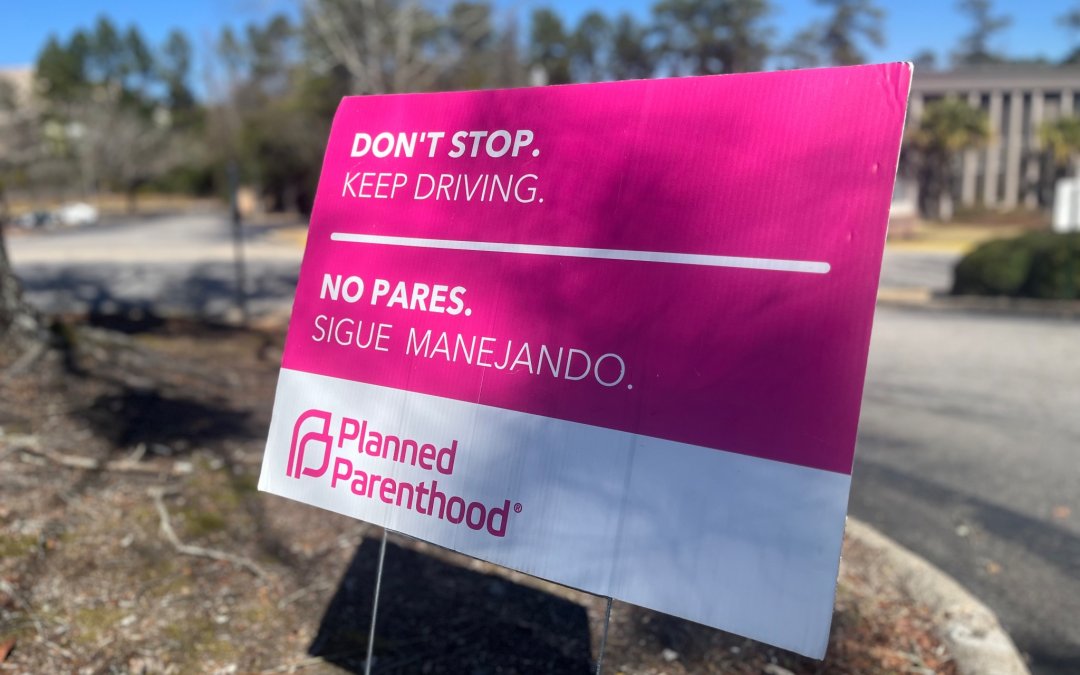
Abortions in South Carolina are banned after six weeks of pregnancy. Local nonprofits are working to help patients anyway
While abortion continues to divide voters along party lines, reproductive justice leaders in the state of South Carolina share why their work remains personally, rather than politically, relevant.
read moreMemories of pandemic wane but long COVID-19 continues for many
ALBANY — When 15-year-old Oneida County resident Matilda Terrell caught COVID-19 for the first time in July 2022, Matilda’s symptoms were mild and they recovered quickly.
But, when they contracted the virus for the second time two months later, their life changed dramatically.
Matilda, who uses they/them pronouns, went from being a happy, well-balanced kid to having severe depression and suicidal ideation almost overnight, according to their mother, Katherine Terrell. When they contracted the virus for a third time in January 2023, they started experiencing crushing fatigue, body aches, a constant headache, brain fog that left them struggling to even read a page, post-exertional malaise, a spiking heart rate, and worsened irritable bowel syndrome symptoms, among others.

Matilda’s mother Katherine described Matilda as a “happy kid” before they developed long COVID. (Courtesy Katherine Terrell)
“It is heartbreaking to see their life reduced to this,” Terrell said. “This is a kid who had just boundless energy their entire life — they would do a full day of school, get all A’s, and then have three hours of dance class before coming home, doing their homework, and going to bed. Now, it’s an accomplishment if they can get out and walk a few blocks.”
Matilda is one of the estimated 18 million Americans who have suffered from residual side effects of COVID-19, known as long COVID-19. The Centers for Disease Control and Prevention estimates that nearly one in five adults who had the virus now have long COVID-19.
According to the National Institutes of Health, there are more than 200 documented long COVID-19 symptoms, which include memory impediments, excessive fatigue, shortness of breath and cognitive impairment.
However, there are no FDA-approved treatments approved by the U.S. Food and Drug Administration to treat the condition. Matilda says their physician told them to “just wait and hope that the research gets done.”
Call for government action
Earlier this year, patients and experts urged the government to declare long COVID-19 a national emergency during a Senate Committee on Health, Education, Labor and Pensions hearing. If declared, the government will be able to fund long COVID-19 research and expedite clinical trials.
In the months following the hearing, the CDC cut its five-day isolation recommendation to one day, a move some public health experts say will lead to more people contracting the virus and developing long COVID-19.
A study conducted by a team of epidemiologists at Washington University in St. Louis found that the risk of getting long COVID-19 increases with each reinfection. Ziyad Al-Aly, one of the authors of the study, worries that public health officials are failing to inform the public about the risks.
“I think the CDC just wanted to change the guidelines because they got sick and tired of the pandemic,” Al-Aly said. “But the facts are that people are still getting COVID infections. Everyone is at risk of long COVID, and I don’t think many people realize that.
President Joe Biden addressed the coronavirus pandemic in his recent State of the Union address, declaring that “the pandemic no longer controls our lives.”
However, for many long COVID-19 patients, like 63-year-old Georgia resident Marjorie Roberts, the pandemic isn’t over. When Roberts contracted the virus in March 2020, she said she suffered from poor balance, nausea, vomiting, and diarrhea, among other issues.
She still has not fully recovered.
Roberts said she believes the government has overlooked long COVID-19. She traveled to Washington, D.C., to deliver a speech last Friday in hopes of bringing the issue to the forefront of public attention.
“I want somebody to hear us, somebody to feel our pain,” Roberts said. “Biden didn’t bring Washington to me, so I’m taking myself to Washington to him. We are a big part of the… union.”

Matilda does a split in the air at the Utica Zoo in Utica, NY. Matilda’s mother Katherine says that Matilda had “boundless energy” before getting long COVID. (Courtesy Katherine Terrell)
Mental health toll
Pam Bishop, a 48-year-old Knoxville, Tenn., resident grappling with long COVID-19, said the lack of public awareness about the condition has fueled loneliness in the community.
Before contracting long COVID-19, Bishop was the director of The National Institute for Stem Evaluation and Research at the University of Tennessee. However, Bishop said she only leaves her home now when it is absolutely necessary, which has made it difficult for her to keep in touch with friends.
“If we’re going to do something I have to know about it beforehand because I have to rest and make sure that my schedule is clear afterwards,” Bishop said. “It is very isolating to be sick like this because you’re exhausted all the time and it’s hard to make plans with people. So, I end up not making plans most of the time.”
Matilda said they went from being a happy kid to “being overwhelmed by suicidal thoughts and wanting to kill myself on a daily basis” after developing long COVID-19. Katherine says that it’s been hard for Matilda to keep up with their friendships because they are constantly missing school and out-of-school activities.
“These are the days where you’re supposed to be spending all your time with friends and going out to parties,” Matilda said. “And because of long COVID, I can’t do any of that. I feel isolated and alone and that’s really hard.”
Financial hardship
The Brookings Institution estimates that as many as 4 million Americans are out of work because of the lingering effects of COVID-19.
Among those sidelined by long COVID-19 is Meighan Stone, who said she can now barely leave her house because of debilitating symptoms from the virus.
Stone had a career in advocacy, working for organizations like the Malala Fund and the Council on Foreign Relations before long COVID-19 symptoms forced her to leave her field. Stone has recently started part-time remote consulting. However, she said it is still not financially sustainable.
She had to transition from Medicaid to private insurance because Medicaid wouldn’t cover the cost of low-dose Naltrexone, a drug that is not yet FDA-approved but has given Stone some relief, she said. The single mother said she wouldn’t be able to afford insurance if it weren’t for the generosity of friends.
Stone’s doctors have encouraged her to apply for Social Security Disability Insurance, but she says she knows she wouldn’t be able to complete the application on her own and doesn’t have the financial resources to hire an attorney.
“I need to spend those resources on taking care of me and my son today,” Stone said. “The disability system is so broken in the United States.”
Andrew Wylam is the co-founder and president of Pandemic Patients, a nonprofit organization that connects those affected by COVID-19 with a network of attorneys who can provide pro-bono legal assistance. Wylam said that applying for disability insurance is an “arduous” process that is particularly challenging for long COVID-19 patients who have cognitive impairments.
“I look at some of the paperwork that you have to go through and all the medical documentation that you have to provide, and I think that can be challenging for someone with average cognitive capacity,” Wylam said. “When you add on the cognitive disability to a person’s symptoms, the process of going through the application and appeals is just overwhelming.”
Wylam said that he’s worked with patients who have applied for Social Security disability insurance and had to wait more than two years for a response. During this time, they are without a steady flow of income, he said.
During the Senate HELP hearing, Rachel Beale, a long COVID-19 patient from Southampton County in Virginia, testified that she was denied Social Security Disability disability insurance twice without any explanation, despite the condition being recognized as a disability under the Americans with Disabilities Act. As a result, she has to pay an estimated $4,000 annually out of pocket and cut back on services that help her manage her chronic pain.
Many of Wylam’s clients have been diagnosed with serious medical conditions and post-viral syndromes that have been brought on by long COVID-19. Wylam said that it can be difficult for patients living with these invisible illnesses to prove they are suffering from symptoms like brain fog, excessive fatigue and difficulty concentrating, which in turn makes it more challenging for them to obtain disability insurance.
When Olenka Sayko went to the emergency room with symptoms of a nervous system disorder a week after testing positive with COVID-19, Sayko said she was told her symptoms were all in her head. This experience of being “gaslit” and dismissed by medical professionals is all too common among long COVID-19 patients, according to Sayko.
In addition to funding for clinical research, the group LC/DC is calling on the government to promote educational campaigns and increase social services for long COVID-19 patients.
“We have a long way to go, and we need to do it quickly because people are suffering,” said Dara York, a founder of LC/DC. “How much longer will we have to stand up and fight?”
Sanders and stakeholders press lawmakers to reauthorize and increase funding for the Older Americans Act
WASHINGTON — Sen. Bernie Sanders (I-Vt.) on Thursday called on fellow members of the Senate Health, Education, Labor, and Pensions Committee to extend and increase funding for the Older American Act to meet the urgent needs of America’s senior citizens.
The Older Americans Act, signed into law in 1965, authorizes government funding for various critical services for the country’s elderly. The law also supports career opportunities, activities to combat loneliness and isolation, disease prevention, job training, protection from abuse, and access to food, water, and places like the doctor’s office or grocery store. However, the law is due to expire on Sept. 30, creating a new urgency to renew and re-fund it.
During Thursday’s hearing, there appeared to be bipartisan support for reauthorizing the measure, but it was unclear whether both sides of the aisle would agree on how much funding should increase. For instance, ranking member Bill Cassidy (R-La.) emphasized the importance of reauthorizing the Old American Act by improving the programs for seniors and leveraging public-private partnerships to expand service.
“We should take lessons learned during the pandemic and use that new knowledge as how we can better serve those who we intend to serve,” said Cassidy, but seemed hesitant about providing an increase in funding,
According to the Organization for Economic Cooperation and Development (OECD), about 23 percent of Americans over 65 live in poverty.
“One out of every four seniors in America is trying to survive for a new continent less than $15,000 a year. And I’m not quite sure if anybody comes to live with $15,000 a year,” said Sanders, chairman of the HELP committee.
The committee heard from several stakeholders who emphasized the importance of getting additional money for seniors. Among those was Dorothy Hutchins, a 93-year-old Alexandria, Virginia, resident, who testified remotely. She shared her story of struggle after her husband’s death and later had hip surgeries. She highlighted the support she received through the Older Americans Act in maintaining her health.
“Everyone deserves the chance to live where they choose, and for most of us, we want to remain in our homes and communities,” Hutchins told lawmakers.
Since 2016, the number of seniors in America has massively increased despite increased demand. In 2020, almost one in every six adults in the United States is age 65 or older. In 1920, the proportion was less than one in 20.
Sanders argued that adjusting for inflation, funding for the law has decreased by nearly 20 percent. Sanders said that providing adequate nutrition meals to seniors is more cost-effective than treating preventable hospital costs.
“Malnutrition among seniors today costs our society over $50 billion each and every year,” said Sanders.
Ellie Hollander, President and CEO of the Meals on Wheels program, testified before the committee to address the growing gap in senior nutrition resources. She highlighted the struggles of severe hunger, with 2.5 million low-income food-insecure people not receiving meals they’re eligible for. Due to high demand, the Meals on Wheels program has to put them on the waitlist.
Hollander stated that to close the current gap for the nutrition program to be effective for seniors, we need to estimate a $774 million increase. The nutrition program alone must close the current services gap.
Ramsey Alwin, president and CEO of the National Council on Aging, pushed for an increase in the financing and modernization of senior centers to support healthy aging.
“We must address lessons learned from the pandemic, reinstate a separate title for senior senators, strengthen the authorization for modernizing them, and increase funding for senior nutrition programs to allow for parity between home-delivered and congregate meal sites,” Alwin said.
The HELP Committee has invited more comments from stakeholders until March 21 via its email oaa@help.senate.gov
A link to more information can be found here.
Latest in Environment
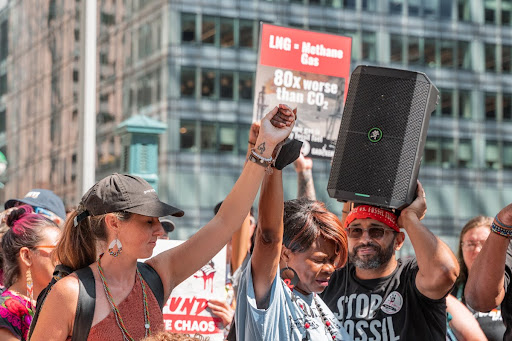
How TikTok catapulted Louisiana climate activists into the political spotlight
In January, the Biden administration announced a pause on approvals of proposed liquefied natural gas projects after one popular TikTok creator traveled to southwest Louisiana to capture some of the residents’ stories.
read moreBiochar Is ‘Low-Hanging Fruit’ for Sequestering Carbon and Combating Climate Change
Since David Laird was young, the “lush, green forests” of the western United States meant an annual summer trip to hike, camp and fish. But the last time Laird was in Wyoming’s Medicine Bow-Routt National Forest, a bark beetle had ravaged an estimated two-thirds of the forest’s lodgepole pines.
For Laird, a professor at Iowa State University, the brittle, brownish-orange pine needles on the trees represented a grave danger to the land: wildfires.
With more than three decades of experience as a soil researcher, Laird believed these dead trees had to be removed so the forest ecosystem could regenerate without risking a lightning strike or “careless cigarette” sending it aflame. He also knew that the trees could be repurposed into a “market-based tool” with the potential to combat climate change while increasing crop production and creating rural jobs. This tool? Biochar.
Biochar is made from burning organic material in an oxygen-deprived environment. It enhances soil fertility and increases the ability of soil—one of the world’s largest carbon sinks—to capture and store carbon, absorbing the emissions from fossil fuels that human activity releases into the air.
The practice of using organic material to enhance soil fertility goes back thousands of years to when Indigenous people in the Amazon built up large piles of nutrient-rich soil mixed with charcoal, food residue and other waste.
Carbon dioxide emissions by humans have to be zeroed out by 2050 to keep Earth’s average annual temperature from going—and staying—more than 1.5 degrees Celsius above pre-industrial levels, as targeted by the Paris climate agreement.
If the planet—as now projected—warms beyond that threshold permanently before 2050, the Intergovernmental Panel on Climate Change says it would require removing at least six gigatons of CO2 annually by 2050 to bring the global temperature back down in the second half of the century. The exact amount of CO2 removal required in the future depends on how much is still being emitted, with different scenarios outlined in the IPCC’s 2023 synthesis report.
Last year, 125,000 tons of CO2 were removed worldwide by the durable carbon market—a carbon credit marketplace for human CO2 removal projects—of which biochar was responsible for 92.9 percent, despite having received only 7 percent of carbon credit purchases. These numbers do not reflect the CO2 sequestered naturally in the ocean and forests.
Laird said biochar alone cannot achieve the 2050 goal, but it’s the easiest and most economically viable first step. He called biochar “the low-hanging fruit.”
“We need multiple, multiple efforts, multiple different processes all working together,” Laird said. “Biochar is one of those.”
What Does Biochar Do?
When mixed with soil, biochar creates favorable conditions for root growth and microbial activity, which reduces greenhouse gas emissions from the earth. It also helps soil retain water and absorb nutrients, repairing nutrient-deficient soil to increase crop production.
Biochar is typically made from wood, but researchers have found that using different types of biomass can bring forth various strengths from the char.
Dominique Lueckenhoff, the chief executive officer of a pollution treatment and applied environmental research group called Ecochar Environmental Solutions, developed manure-based biochar to enhance the performance of green infrastructure, like rain gardens and porous pavement.
Green infrastructure, which uses nature to mitigate the effects of climate change, like flooding and high temperatures, in urban environments, is getting more common, especially since President Joe Biden’s Inflation Reduction Act incentivized investment in it with grants and loans.
Lueckenhoff said this infrastructure is designed to catch water where it falls, rather than treating the water or the soil for pollutants.
“In urban areas, the soils are not only dead,” Lueckenhoff said. “They’re also contaminated.”
Lueckenhoff began developing manure-based biochar to depollute water after a 2010 Environmental Protection Agency study found dangerously high nutrient levels from agricultural runoff in the Chesapeake Bay.
Manure-based char counterintuitively absorbs up to 99 percent of harmful pollutants from water, according to Lueckenhoff’s research, acting as a natural purification system.
Lueckenhoff’s group is now partnering with the D.C.-based green infrastructure company, Rainplan, to add custom biochars to green infrastructure.
“It’s about turning a big problem into a multi-beneficial solution,” Lueckenhoff said. “I can reduce the nutrient impacts, I can create markets for farmers to turn that into a beneficial treatment, I can eliminate toxic exposures for people and the environment, animals, etcetera and I can drive new economies.”
Lueckenhoff’s chars have also been used to augment the growth speed and strength of hemp crops and treat superfund sites for toxins.
Since pollutants particularly harm disadvantaged communities, biochar can be a potent environmental justice tool for removing these toxins.
A Bipartisan Solution
Another testament to biochar’s utility: It has bipartisan congressional support. A bill to fund biochar research, introduced in March 2023, is now pending before a Senate Agriculture Committee.
Sen. Chuck Grassley (R-Iowa) was one of four senators who cosponsored the bill.
“Biochar presents an exciting opportunity for farmers looking for a low-cost way to improve soil quality while sequestering carbon,” Grassley said in a written statement to the Medill News Service.
Sen. Sherrod Brown (D-Ohio), another cosponsor, said he aims to get provisions for biochar research into this year’s farm bill, which funds crop insurance, conservation, nutrition and commodities.
“The research will give another tool to farmers, who understand the environment and understand climate and understand productivity of their land,” Brown said. “This can lead to better productivity and better, ultimately, prices for them.”
Biochar is made by putting biomass into structures, like a covered kiln, and heating it without oxygen to convert organic carbon to a long-lasting form of carbon that does not easily break down. The resulting product is made up of small, black porous bits of char.
“The pollution from making biochar is no worse, and sometimes it’s better, than pollution from just burning biomass,” said Tom Miles, the executive director of U.S. Biochar Initiative. “And the emissions are better than in a lot of fireplaces.”
Biochar is currently expensive to make in the U.S. because large amounts of biomass must be shipped to fewer than 50 small-scale production facilities in the country.
According to Miles, farmers typically pay no more than $50 per acre for crop treatment using fertilizer. Even though biochar lasts hundreds to thousands of years, farmers struggle to afford it at $500 per ton of biochar per acre.
Many researchers envision a nationwide network of medium-sized facilities using local biomass to create the char, which would create jobs across the country, especially in rural communities with access to organic material.
This means facilities in Wyoming could use dead trees like the ones Laird saw in the Medicine Bow-Routt National Forest to clear the wildfire risk and create a char to help revitalize dried-out soil. Pennsylvania facilities, on the other hand, could produce manure-based char and reduce the amount of nutrient leaching that would have to be resolved downstream in the Chesapeake Bay.
Only a “fraction of a percent” of U.S. agriculture currently uses biochar. But according to Miles, “there’s a real dollar and cents market opportunity that we could approach with biochar.”
Lueckenhoff said her manure-based char is a cheaper water treatment than the alternative, granular activated carbon, but it is not widely used in this way because she is one of the few researchers doing “strong work on the toxic side.”
Biochar prices dropped by 38 percent from 2022 to 2023, according to a 2023 CDR.fyi carbon capture report. With around a quarter of U.S. greenhouse gas emissions coming from agriculture, forestry and other land use, conservation techniques in the agriculture sector have both strong environmental and economic potential
“As we address climate change, we need to dramatically reduce the use of fossil fuels, but at the same time, we can’t damage the economy,” Laird said.
Roadblocks
In February, a biochar conference in Sacramento brought in over 655 attendees from 28 countries and 44 states, according to Miles. He said he expects the conference to grow to around 800 attendees next year.
However, biochar has mainly been taken up by small businesses, and its market remains limited.
“People don’t know about biochar—don’t know or understand what the benefits are,” Miles said.
Early studies did not account for different soil and land conditions needing different amounts of biochar, so in some tests, the char leached nutrients from crops. Now, more than 30,000 peer-reviewed papers explain how biochar works, and guidelines like the Pacific Northwest Biochar Atlas instruct growers on how to maximize its use.
The process of making biochar has other byproducts, like oil that can easily be made into asphalt, sugar and liquid fuel that can be used for shipping and aviation.
“This is the niche that we see this technology fitting into—a system that can replace difficult-to-electrify transportation and at the same time be producing a char which goes into the soil,” Laird said.
But uptake of sustainable energy is slow because fossil fuel companies are not penalized for the environmental damage their oil and gas products cause.
“If we have to compete head to head against petroleum, it’s going to be a real tough sell,” Laird added.
Some laws complicate using biochar. For example, the Department of Agriculture pays farmers to adopt conservation practices, but it excludes biochar produced from crop residue out of concerns that farmers would remove too much biomass and damage their land.
Laird said such policies are like taking a “sledgehammer to a sewing machine.” He said creating legal, economic and industry incentives to adopt the new technology can help facilitate its uptake.
Another challenge for biochar is its political instability, Laird said. The risk that former president Donald Trump wins the presidency and repeals Biden’s conservation incentives in the Inflation Reduction Act discourages large investors from pouring money into the industry to help it take off.
Despite the hurdles to a booming biochar industry, many researchers, policymakers and advocates are optimistic that the char will gain prevalence and deliver environmental and economic benefits across the country.
A new study of the global biochar industry by the International Biochar Initiative and U.S. Biochar Initiative predicts that biochar revenues will surge from $600 million U.S. dollars in 2023 to $3.3 billion by 2025.
Lueckenhoff said she is “on the precipice” of rolling out her manure-based biochar. She next plans to look into making char from compost and biosolids, like sewage sludge, she said.
“It’s going to take a major industry effort to actually remove a gigaton of CO2 from the atmosphere,” Laird said. “This is a pathway towards that. It can be done.”
Parents concerned over poor health impact on children caused by climate change
WASHINGTON – When Dr. Lisa Patel was working on a project for the Environmental Protection Agency in 2005, she visited a children’s hospital for asthma in Mumbai, India. After seeing the main parts of the center, she was surprised when the coordinators took her to a nearby gymnasium that had been converted into a children’s asthma ward. It was filled with even more children who were receiving care.
Seeing an entire gymnasium full of child asthmatics struggling to breathe was moving for Dr. Patel, the executive director of the Medical Society Consortium on Climate and Health. But the global climate crisis became much more personal when the California wildfires reached her own children almost a decade later.
“That’s when it became very concrete to me that no child should be breathing in this absolutely foul pollution that’s ruining their health,” she said.
According to a report by the Harvard T.H. Chan School of Public Health, children face disproportionate ill effects as a result of climate change, largely because they are actively developing both mentally and physically.
Children are affected by both “indoor air” and their surrounding climate, Executive Director of the Children’s Environmental Health Network Nsedu Obot Witherspoon said at a Moms Clean Air Force (MCAF) event about children’s health in the face of the climate crisis on Feb. 8.
According to Witherspoon, “indoor air” is impacted by a number of products including cleaners, toys, pesticides and other human-made items children encounter. “Climate” encompasses air quality, water quality, pollution, natural disasters and any additional environmental factors.
While everyone is impacted by these types of exposure, children are more likely to be negatively impacted.
“Their airways are smaller. They have developing immune systems,” Dr. Patel said. “So things like NOx or PM2.5 irritate the lung lining and put children at higher risk for respiratory illnesses.”
NOx, also known as nitrogen oxides, are “a group of highly reactive gasses, including nitrogen dioxide, nitrous acid, and nitric acid,” according to the Arizona Department of Environmental Quality (ADEQ). Similarly, the ADEQ classifies PM2.5 as “the smallest, most harmful particulate pollution.” PM2.5 is a combination of nitrogen oxides and other harmful substances.
In the U.S., 49% of parents say climate change has affected their decision about having more children, according to a recent study conducted by Morning Consult on behalf of the technology company, HP.
Moreover, the study concluded that 91% of parents globally are worried about the climate crisis and have changed their purchasing habits as a result.
“I studied climate change in college and at the time, it felt like a calling, and it felt like something that I wanted to do,” Dr. Patel said. “But I think when I had my kids, it no longer felt like a choice. It felt like something that I had to do.”
Even so, parents have little control over what substances their children come into contact with. With more than 12 million children under the age of five in the United States in some form of nonparental care, Witherspoon said the industry lacks sufficient regulations, focusing on these “critical windows of exposure.”
Prevention through policy
Existing health and safety policy surrounding child care is largely centered around the prevention of the spread of infectious diseases and violence, though there are also climate-related regulations to highlight.
The National Resource Center for Health and Safety in Child Care and Early Education is the most prevalent organization setting health and safety standards for child care facilities. Their resources give providers national and state standards to follow.
One national standard largely influenced by the Clean Air Act stated that providers must check the air quality index before determining if it is safe for children to play outside. There are also established protocols surrounding natural disasters to keep facilities prepared to protect children in the event of an emergency.
States can establish their own rules for child care providers too. For example, a 2018 California law required licensed child care centers to test their water for lead by 2023.
After results found shocking levels of the poisonous substance in the water supplies, Rep. Katie Porter (D-Calif.) said California children’s lead exposure was alarming.
“One in four California child care centers has dangerously high levels of lead in their drinking water,” Porter said. “Children are our future, and we owe it to every American to protect all kids’ safety and well-being.”
In remarks made in Pittsburgh on Feb. 20, Vice President Kamala Harris promised to eliminate all lead pipes in the United States, recognizing the impact that lead has on children’s health.
The Biden-Harris Lead Pipe and Paint Action Plan “includes over 15 new actions from more than 10 federal agencies that ensure the federal government is marshalling every resource to make rapid progress towards replacing all lead pipes in the next decade.”
“When children drink toxic water through lead pipes, it has an impact on their learning ability, on their health,” Harris said. “And for too long, this has been the case, that communities have been crying out for support to get rid of these lead pipes.”
There are also environmental justice concerns around the quality of drinking water, which Porter alluded to in her remarks.
“Many of the worst facilities for lead levels are in low-income areas or communities of color,” she said.
According to Witherspoon, the child care industry is a space where environmental injustice is heightened because the profession is largely dominated by women, including women of color and women of childbearing age. She said there is a dual benefit of reducing the environmental hazards and limiting the negative health effects for both children and their care providers.
Exposure to plastic
Another concern for children’s environmental health is exposure to plastics. Judith Enck is the founder and president of Beyond Plastics and a former EPA regional administrator. Her work focuses on the dangers of plastic pollution. At the MCAF event in early February, she cited how plastic emissions are replacing those originally produced by the coal industry.
“Plastics is Plan B for the fossil fuels industry,” she said. “All of us have microplastics in our bodies.”
Microplastics are a particular danger because they are being found in a variety of organs, from livers to placentas. According to a study by a peer reviewed journal titled Birth Defects Research, exposure to microplastics as a newborn “is linked to the development of multiple illnesses in adulthood.”
Yet exposure can also occur before a child is born, “which may have the potential to cause harmful effects later in life,” according to a recent study by Environment International.
While action has been taken against the rise of plastics, Enck said she is still working toward more change.
In December, the EPA decided that vinyl chloride, which has been a known carcinogen for about 50 years, will be among five chemicals that will begin the risk evaluation prioritization process under the Toxic Substances Control Act, Enck said. “But that’s the beginning of a ten-year journey to ban vinyl chloride,” she added.
The mental health toll of the climate crisis
Research shows that children’s mental wellness is also affected by the climate crisis.
“There’s actually some emerging data that early exposure to air pollution places children at higher risk for anxiety and depression,” Dr. Patel said.
Dr. Lise Van Susteren, a medical doctor and general and forensic psychiatrist, indicated the youth population is paying a mental toll for the climate crisis.
“The extreme weather events they face not only bring – acutely – fear, anger, sorrow, etc. But over time, what happens is they become dispirited, even demoralized and feel potentially a feeling of abandonment and betrayal by their government,” Dr. Van Susteren said.
While the public might differ over which initiatives to support, two-thirds of Americans agree that the government should be doing more to solve the climate crisis, according to a 2020 study conducted by the Pew Research Center. This support extends across partisan lines.
Dr. Van Susteren said there should be more psychiatrists who specialize in climate mental health. This support could help improve the morale of a younger generation that feels a widening gap between themselves and their government.
At the MCAF event, she said it is important to consider a child’s particular age, behavior and the context in which they live before talking to them about climate change. Supporting a child’s mental well-being is not a “one size fits all approach.”
While some kids need more transparency, others need protection, Dr. Van Susteren said. It is up to those supporting the children to assess what they need based on existing factors.
Dr. Van Susteren said adults should also be aware of their own mental well-being. She wants people who are struggling mentally with the climate crisis to “recognize that it’s really our collective effort – individually counted, it’s just like votes on election day – but this is what ends up changing the course of our history.”
Dr. Patel said she feels a particular responsibility to protect her own children.
“I brought them into this world. And so it’s incumbent on me to make sure that this is a world worthy of them,” she said.
Latest in National Security
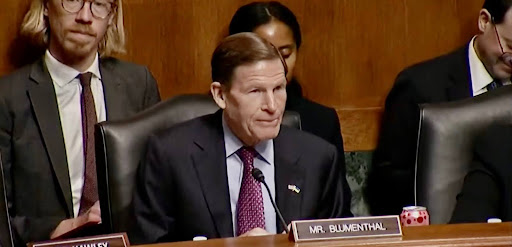
Deepfakes pose threats to upcoming US Presidential Elections
Senator Blumenthal is calling for an urgent need for a bipartisan bill to counter AI interference in upcoming presidential elections.
read moreLawmakers urge investigation into Pakistan’s election irregularities
WASHINGTON — Chairman Michael McCaul, R-Texas, called on the members of the Committee on Foreign Affairs on Wednesday to investigate electoral irregularities and violence that took place in the recent election in Pakistan on February 8, 2024.
The United States and international election monitors have raised concerns about pre-election and election-day irregularities, including disproportionate limitations on freedom of expression and assembly, attacks on journalists and limitations on internet and telecom services.
“In addition to promoting democratic values, supporting Pakistan’s economy is a key strategic goal of our bilateral relationship,” said Rep. Dean Phillips, D-Minn.
Donald Lu, Assistant Secretary of State, Bureau for South and Central Asian Affairs, testified in front of Congress, stating that after the day of the elections, the State Department issued a clear statement condemning electoral violence, human rights violations, media attacks, internet and telecommunication restrictions and allegations of interference in the electoral process, urging a full investigation.
“Second, We’re very focused on economic stability for Pakistan and for Pakistan to deal with its social terrorism and political issues,” said Lu.
Chairman Joe Wilson cross-examined the accusations against Imran Khan, claiming that the U.S. government was involved in removing Khan from power. Lu stated that there was no such involvement from the U.S. and that it was just a conspiracy theory. “The then-ambassador of Pakistan to the United States has testified to his government that there was no conspiracy. We respect the sovereignty of Pakistan,” said Lu.
During the hearing, observers shouted “liar” and “free Iman Khan, the only democratic prime minister,” and seemed dissatisfied with Donald Lu’s testimony. Capitol Police escorted the protestors from the hearing room.
Rep. Brad Sherman, D-Calif., questioned the impartiality of the Pakistani judicial system. He raised concerns about the treatment of American citizens, including Dr. Aafia Siddiqui, who has been jailed for over 14 years without charge. Emphasizing the importance of prioritizing human rights in Pakistan, he called for the American ambassador to visit and the president to take action.
“That’s the same judicial system with Dr. Afridi in jail for 14 years. For getting bin Laden. Do we have faith that Imran Khan has not been the victim of selective prosecution?” Sherman said.
McCaul stated that Pakistan is experiencing substantial economic issues, such as record inflation and foreign debt, and its domestic condition is catastrophic. He also maintained human rights in Pakistan must be protected for democracy to flourish. He says the United States and Pakistan must continue to work together to combat terrorism and promote regional stability.
“We also know that if the United States falls away from our relationship with Pakistan, the Chinese Communist Party will gain even more influence,” said McCaul. “CCP is only interested in a one-way relationship of debt trap diplomacy and Pakistan [is] the ground zero for the Belt and Road Initiative.”
The ranking members of the committee urged Pakistan’s government and Election Commission to investigate interference and fraud in the recent election with complete transparency and hold those responsible accountable.
Investment Firms Step Away from Chinese Tech Companies After Scrutiny
WASHINGTON – For years, US venture capital firms have invested in Chinese technology companies linked to China’s military and persecution of the Uyghur people. Now, the recent glare of the spotlight from Congress and declining public opinion of China has prompted these firms to step back from involvement in the country.
A bipartisan investigation released last month, co-sponsored by Reps. Mike Gallagher (R-WI) and Raja Krishnamoorthi (D-IL), alleges that several prominent Silicon Valley firms invested at least $3 billion over the last 20 years in Chinese companies. The report contends that these firms contributed to China’s military and surveillance of the Uyghur people, a predominantly Muslim ethnic group native to Northwest China.
The venture capital firms cited – Sequoia Capital China, Walden International, Qualcomm Ventures, GSR Ventures and GGV Capital – invested in China’s AI and semiconductor sectors. The list includes $1.9 billion in AI companies, and over $1.2 billion in 150 semiconductor companies – a “dual-use” technology that is used for both civilian and military purposes. Several of the companies are blacklisted by the US government.
“We need to understand that a dollar given to a Chinese AI company, semiconductor company, or any other advanced dual-use technology company is a dollar that can be given to support the CCP [Chinese Communist Party] and the PLA [People’s Liberation Army],” Rep. Gallagher said in a statement to the Medill News Service. “We need to cut off the flow of funds. We can’t afford to keep funding our own destruction.”
In the report, the lawmakers warned that because the committee examined only five venture capital firms, the investigation greatly understates the total US investment in China’s AI and semiconductor sectors. According to the Office of the United States Trade Representative, the total US foreign direct investment in China was $126.1 billion in 2022.
Reps. Gallagher and Krishnamoorthi, who lead the House Select Committee on the Chinese Communist Party, launched the investigation in July 2023. The lawmakers sent letters to venture capital firms requesting information about the firms’ investments in Chinese entities.
Taking aim at Artificial Intelligence
The report investigated AI companies that primarily develop technology used for facial recognition and surveillance for the Chinese military. According to the report, this technology has been used to identify and track Uyghurs living in China.
For instance, Megvii, developer of the Face++ facial recognition software, is one of the primary companies investigated, receiving over $15 million from GGV Capital since 2019. Roughly two-thirds of Megvii’s revenue came from CCP surveillance projects in the year GGV invested in Megvii, the report stated.
After GGV Capital made its investment, Megvii was placed on “multiple US government red flag lists over its involvement in surveilling and tracking Uyghurs in Xinjiang,” according to the report.
A GGV Capital spokesperson told the Medill News Service that the company is “actively seeking exit” from investments with Megvii. The committee’s report noted that the firm has faced challenges with the separation due to “limited market appetite for purchasing the shares.”
GGV Capital is also splitting into two separate entities, GGV Capital U.S. and GGV Capital Asia, a transition the firm expects to complete by the end of March. According to a statement provided to the Medill News Service, the split will be a “separation of all business and operational processes to function as separate and independent firms.”
GGV Capital US “will not invest in China,” the statement said.
While the committee’s report called efforts to split off from China “a step in the right direction,” Reps. Gallagher and Krishnamoorthi specified that legislative action is still needed to stop “future flows of American capital to problematic PRC companies.”
When Megvii filed for an initial public offering in Hong Kong’s stock market in late 2019, the company issued a now-archived report stating that agreements with customers require its technology to be used only for “civil purposes,” not for military use or human rights violations.
GGV Capital told the Medill News Service that the firm “was not aware of any potential (or actual) abuse of Megvii’s technology as an investment risk and only became aware when certain details became known publicly.”
According to the 2019 Megvii report, other major US finance firms were co-sponsors of Megvii’s IPO, including Goldman-Sachs, Citigroup, and J.P. Morgan. After Megvii’s 2019 IPO application lapsed, Megvii filed for a new IPO in Shanghai in 2021, and the major U.S. finance firms were no longer listed as co-sponsors. However, GGV Capital hasn’t ended its relationship with Megvii completely despite attempting separation.
Worries over China’s domination in microchips
According to the committee’s report, China also plans to dominate the semiconductor industry by 2030 by increasing domestic production and collaborating with foreign firms. Semiconductors are essential parts of electronic devices, used in a variety of products from smartphones to weapons.
The investigation found that Walden International, a venture capital firm headquartered in California, is one of the largest investors in the Chinese semiconductor industry. The firm may have invested as much as $2.2 billion in China’s semiconductor sector. This includes a combined $125 million investment in Semiconductor Manufacturing International Corporation, or SMIC, and its affiliated entities, which is now on multiple U.S. blacklists because it supplies the Chinese military.
Walden International did not respond to a request for comment.
Albert Keidel, an economist and professor at George Washington University specializing in East Asia, said he is skeptical of the report’s findings. He argued that the investigation misinterprets the firms’ investments as dangerous, when in reality the investments are common among growing economies.
Keidel noted that the report emphasized the firms’ investments in dual-use technologies. He said the report had “logical issues,” pointing out that foreign investment in US companies like Boeing could be interpreted as beneficial to the US military.
“Is investing in portfolio investments in large Chinese firms that have a dual purpose really going to stop the Chinese from advancing their technologies?” Keidel said. “I really doubt it.”
Several of the firms responded similarly to the investigation’s findings. According to the report, the firms made their investments “during an era of optimism.”
“We need to face the fact that China is a competent government that is trying to increase its standard of living,” Keidel claimed. “We’re pointing the finger at others that are becoming successful and good competitors.”
Rep. Krishnamoorthi’s perspective on dual-use technology differed from Keidel’s. According to a statement from Krishnamoorthi, the report shows investments in “sensitive sectors,” sometimes through blacklisted companies.
“Dual-use technologies pose inherent dangers in the wrong hands through their military applications,” Rep. Krishnamoorthi said in the statement. “Through its military buildup, ongoing genocide, and other human rights abuses, the CCP has shown that it does not deserve the benefit of the doubt.”
Consulting and Intangible Involvement
Beyond financial investment, some venture capital and consulting firms have been identified as providing intangible expertise and advice to Chinese companies supporting the military. According to the report, these services include talent acquisition, consulting and job training.
According to the report, GGV Capital worked with Tsinghua University to launch a financial training program for companies in GGV’s ecosystem. Walden International reported that it “often assists its portfolio companies with identifying talent, suggesting or connecting with other investors, and corporate strategy matters.” The report notes that the firm provided these services for SMIC.
Some consulting firms have also recently been identified as having collaborated with Chinese companies. The Financial Times reported last month that Urban China Initiative, a think tank led by Mckinsey & Company, advised the CCP and provided research instrumental to China’s 2016-2020 Five Year Plan.
In response, Rep. Gallagher issued a statement condemning McKinsey.
“One is left to conclude that McKinsey’s true mission is to make money, even if that money comes from genocidal communists,” Rep. Gallagher said in the statement. “Companies like McKinsey that help the CCP in its quest to destroy individual dignity and American global leadership should be prohibited from receiving taxpayer dollars.”
In response to the allegations made by The Financial Times report, McKinsey issued a statement asserting that “the Urban China Initiative is not McKinsey, and it did not perform work on McKinsey’s behalf.”
McKinsey stated that UCI was co-founded in 2011 with Columbia University and Tsinghua University. The consulting firm denied working with China, stating its “client work in China is overwhelmingly for US, multinational and Chinese private sector entities.”
McKinsey shut down UCI in 2021, following recent trends of divestment in Chinese organizations and separation from branches in China.
Next Steps
Reps. Krishnamoorthi and Gallagher recommended that Congress pass legislation to prohibit investments in PRC companies on US sanctions and red flag lists, including the Uyghur Forced Labor Prevention Act Entity List. They also recommended that such lists be updated to include more companies with ties to China’s technology industries.
“The Committee’s findings suggest that there are billions of dollars beyond those captured in this report that have flowed into PRC companies that support the PRC’s military, digital authoritarianism, and efforts to develop technological supremacy and undermine American technological leadership,” the report said.
Latest in Living

FreeHer protesters call on Biden to ‘Bring Moms Home’ from prisons and jails
The peaceful protest emphasized that this Mother’s Day, nearly 150,000 incarcerated mothers will not be able to celebrate because they are separated from their children.
read moreIn Photo: Anti-war group distributes free vegan food to combat poverty, hunger
WASHINGTON – The Washington chapter of Food Not Bombs, a volunteer group that gives out free vegan meals to combat poverty and hunger, distributed meals on Saturday, undeterred by persistent rain.
D.C. is one of over 1,000 cities in 65 countries served by Food Not Bombs, according to its website. The first of the autonomous, non-hierarchical chapters was founded by anti-nuclear activists in 1980 in Cambridge, Mass.
Will Reid, a leading member of the D.C. branch, said he often ate from Food Not Bombs in Houston, Texas when it provided food for the Occupy movement, an international movement in the early 2010s that advocated for socio-economic justice.
Reid started volunteering for Food Not Bombs in 2014 when he moved to Washington. He now devotes around nine hours to the group each week, and he “can’t stop thinking about it.”
“The vast majority of friendships that I have in D.C. I can somehow trace back to Food Not Bombs,” Reid said.
The group dishes out food donated by local businesses that otherwise would have been thrown away.
In addition to reducing food waste, another of the group’s guiding tenets is nonviolence. The D.C. chapter has provided food for multiple Gaza ceasefire protests.
The group distributes only vegan options to avoid food safety issues, serve individuals who do not eat animal products, oppose violence in the animal industry and provide nutritious options.
It serves around 25 to 75 people each week in the winter, and around 75 to 150 people in the summer, Reid estimated.

Volunteers Will Reid (right) and Jason (left) share an umbrella in the rain. They met in 2014 when they got involved with Food Not Bombs. (Lindsey Byman/MNS)

Vegan donuts from Donut Run in Tacoma are a staple handout for Food Not Bombs. Reid said eating these donuts each week is a perk of volunteering. (Lindsey Byman/MNS)

A volunteer hands someone a hot drink. Volunteers are instructed to wear masks and gloves when they serve food. (Lindsey Byman/MNS)

A volunteer scoops spaghetti into a plastic container. This week’s menu also included chili, fresh fruits and vegetables and brownies. (Lindsey Byman/MNS)

Stacked containers of food sit on a plastic folding table. Food Not Bombs aims to reduce food waste by giving out items that would otherwise have been thrown away. (Lindsey Byman/MNS)

A volunteer hands someone a hot beverage over the table. Many volunteers knew the people they served by name. (Lindsey Byman/MNS)
Supreme Court takes up the case involving a BMW, a robbery and blown deadlines
WASHINGTON – When is it too late for the government to provide notice that they are seeking forfeiture in criminal cases? That was the question at the heart of a Supreme Court hearing on Tuesday.
The case arose after a federal jury in New York convicted Louis McIntosh in 2013 for violating multiple robbery and firearm offenses. A federal district court ordered him to forfeit $75,000 and a BMW he purchased with robbery funds.
At the sentencing, the government was instructed to submit a written order within a week, as per the Federal Rules of Criminal Procedure. The government failed to meet that time frame, instead submitting the order three years later for the money and car.
McIntosh sued and the case made its way to the Supreme Court, where the justices had a chance to revisit some of what they handled in their previous appointments to the bench.
“When a preliminary order of [criminal] forfeiture is not entered as it should be prior to sentencing, then the government loses its right to forfeiture,” McIntosh’s attorney, Steven Yurowitz, argued.
Several justices seemed skeptical that the time limits in the criminal code were mandatory.
Referencing her experience as a district judge, Justice Sonia Sotomayor noted that courts are usually flexible. “They set a fixed deadline. Something you can know and meet without discretion being involved.”
The Supreme Court has a precedent to rely on: In Dolan v. United States, the high court decided that a restitution order was valid despite it being submitted after the 90-day deadline as spelled out in the Mandatory Victims Restitution Act.
That case “recognized what I’ll call a ‘better late than never’ rule in complying with congressional directives,” Justice Neil Gorsch said.
In that decision, made in 2010, the Supreme Court outlined three types of deadlines: “jurisdictional rules” which are strict and can’t be overlooked; “claims processing rules,” which regulate timing but can be waived; and “time-related directives” intended to keep cases timely but are not absolute.
Justice Ketanji Brown Jackson asked whether the latest case had a deeper procedural error that needed a high court ruling. She pressed Yurowitz on whether a missed jurisdictional deadline should face consequences. He replied that a defendant is subject to sentence even though the government missed its deadline.
Chief Justice John Roberts raised hypotheticals about forfeiture timelines that a defendant could face in their sentencing.
“In this case there was no order entered until three years after,” Yurowitz responded. “Forfeiture is an element of sentencing and there’s an element of finality to it.”
Assistant to the Solicitor General Matthew Guarnieri argued that both the U.S. Appeals Court for the Second Circuit and federal district court offered the defendant notice of the forfeiture, and he had the opportunity to contest it before the sentencing process.
“The second circuit itself established that there was no prejudice to the defendant here,” Guarnieri said.
The justices asked whether they may violate the claim processing rule they set forth.
“I don’t think the court needs to address it,” Guarnieri said. “In general, the rule here contemplates that the court will announce the forfeiture as part of imposing sentence on the defendant and if the court purports to act after sentencing… then we have a harder set of issues.”
A decision in the case is expected to be issued by June.
Latest Business
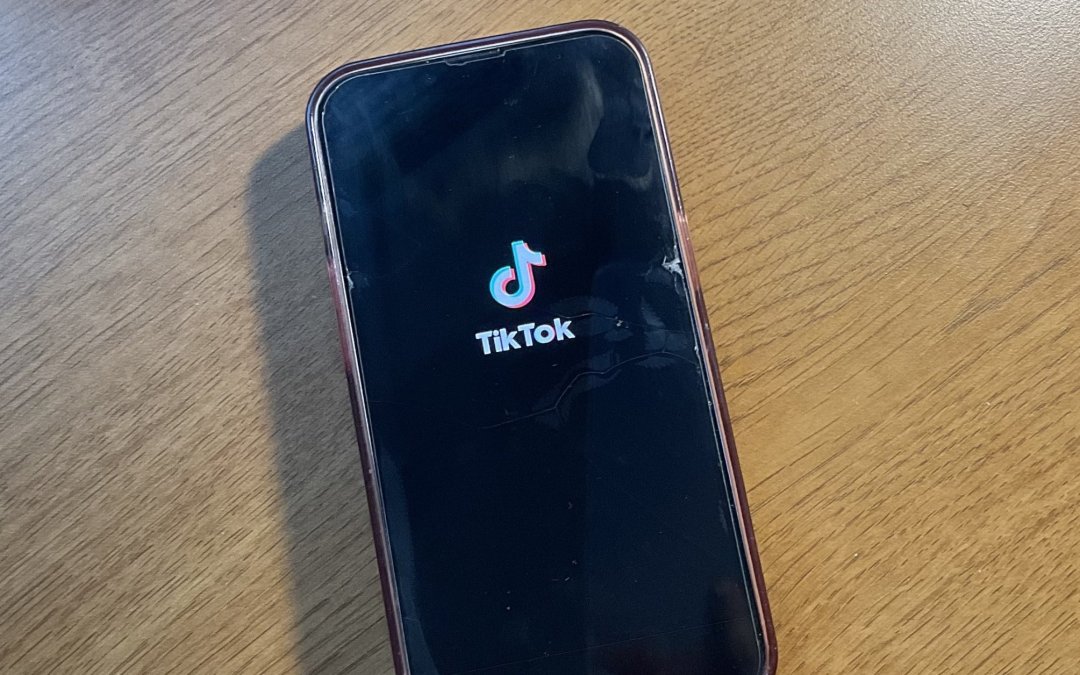
Gen Z looks for more financial guidance and protection amid rising debt and consumerist culture
Those born between 1997 and 2012 have grown up online with easy access to purchasing and money. Consumer advocates say Gen Z now faces unique economic headwinds.
read moreSanders presses for 32-hour workweek in new bill and hearing
WASHINGTON — Sen. Bernie Sanders (I-Vt.) is calling on Congress to press for a 32-hour workweek without any loss in pay, noting that Americans are working longer hours than people of any other wealthy nation even with the advancement of technology.
“Despite these long hours, the average worker in America makes almost $50 a week less than he or she did fifty years ago after adjusting for inflation,” Sanders said, chairman of the Health, Education, Labor and Pensions Committee, during a hearing on Thursday that focused on the issue.
He noted that it has been 80 years since Congress had held a hearing on the topic, and he called several worker advocates to testify about the benefits of reducing standard work hours. He is introducing new legislation that has the backing of several unions including the AFL-CIO.
Shawn Fain, the president of the Union Auto Workers, testified on Thursday in favor of the legislation, saying working fewer hours has advantages such as higher productivity and employee well-being.
“Those who make this country run, who build the products and contribute the labor, have less and less time for themselves, for their families, and for their lives,” Fain said in his testimony.
“The working class people are not lazy, they are fed up, they are fed up with being left behind, stripped of dignity, as wealth inequality in this nation spirals out of control,” he said.
He added that workers today are living paycheck to paycheck and working deep into their 70s and 80s because they cannot afford to retire.
Sanders said that over the past 50 years, technology has undergone tremendous progress, yet the majority of the financial benefits have gone to the wealthiest, while worker wages have either stagnated or declined.
“Today’s CEOs earn 350 times more than the typical employee, and workers across the nation are witnessing the disintegration of their families. … people have to miss out on family time in order to work longer hours,” he said,
Sanders’s proposal has the backing of other Democrats, including Rep. Mark Takano (D-Calif.) who introduced companion legislation in the House. In practice, many companies could implement the measure by instituting four, eight-hour work days.
But it is unclear whether the bill will garner enough bipartisan support to become law. Sen. Bill Cassidy (R-La.), ranking member of the committee, said businesses need to maintain a 40-hour workweek to remain competitive not just locally but globally and a government mandate for a 32-hour workweek will be catastrophic.
“Government should not undermine an employer’s ability to keep their doors open with unreasonable mandates,” Cassidy said in his opening statement. He suggested that requiring such a cut in work hours will require companies to pay at least 25% more to employees, which could result in jobs being shipped overseas.
He added that businesses are always allowed to voluntarily try out a 32-hour workweek themselves.
Some representatives of the business sector also came out in favor of the shorter workweek. Jon Leland, chief strategy officer of Kickstarter, a crowdfunding platform, testified that his company went to a four-day workweek in 2022 after the pandemic.
“The truth is, a lot of time at work is not used efficiently,” Leland said in his testimony. “In the six months of the pilot, our ability to hit our company goals jumped from 62% to 95%”
Leland found so much benefit in the concept that he co-founded WorkFour, an organization to help companies transition to a four-day workweek.
A ‘comeback story’ for American manufacturing
WASHINGTON — President Biden boasted his administration’s infrastructure investments — with an emphasis on clean energy projects — in his State of the Union address to the nation Thursday evening.
In his opening remarks about the economy, Biden noted his administration had created nearly 800,000 manufacturing jobs, with more to follow in 2024.
He touted his commitment to domestic manufacturing, a priority of his since his election to office, as a result of the Bipartisan Infrastructure Law’s Build America, Buy America provisions.
“Buy American has been the law of the land since the 1930s,” Biden said. “On my watch, federal projects like roads, bridges and highways will be made with American products built by American workers, creating good-paying American jobs.”
He rooted his accomplishments in Belvidere, Ill., where Biden backed the United Auto Workers labor union in revitalizing and converting the Belvidere Assembly Plant into an all-electric facility. A nearby $3.2 billion battery factory will manufacture materials for the vehicles.
The president said infrastructure investments like these are part of America’s “comeback story.”
“Instead of watching auto jobs of the future go overseas, 4,000 union workers with higher wages will be building that future here in America,” Biden said.
These are just two of 46,000 projects the president promoted last night, aiming to modernize roads, bridges, ports, airports and public transit systems. Most projects have a clean-energy focus, with his administration hiring at a rapid pace to meet demand and slow climate change.
Biden said his clean-energy policies have attracted $650 billion of private sector investments in advanced manufacturing, making progress on priorities such as installing nationwide EV charging stations.
“I’m taking the most significant action on climate change in the history of the world,” Biden said. “I am cutting our carbon emissions in half by 2030 and creating tens of thousands of clean-energy jobs.”
SOTU: Health Care
WASHINGTON – President Donald Trump said Tuesday that Congress should approve his plan to replace Obamacare with a new health care program that would provide “affordable alternative” insurance options and criticized Democrats for trying to impose “a socialist takeover of our health care system.”
“A good life for American families requires the most affordable, innovative and high-quality health care system on earth,” Trump said in his third State of the Union address.
Trump said he has proposed health care plans that would be up to 60% cheaper than the Affordable Care Act plans. Both the White House and the Department of Health and Human Services did not respond when asked if a specific replacement plan has existed or ever will.
The president blamed Democrats for not providing the American people with the health care reforms he has promised.
“As we work to improve Americans’ health care, there are those who want to take away your health care, take away your doctor, and abolish private insurance entirely,” said Trump, referring to the Democrats.
Democrats stood up at this comment, pointed their fingers at Trump and shouted “YOU.”
Trump said 130 Democrats endorse legislation to impose a “socialist takeover” of the health care system by “taking away the private health insurance plans of 180 million.”
Democratic presidential candidates Sen. Bernie Sanders, I-Vt., and Sen. Elizabeth Warren, D-Mass., are pushing for a “Medicare for All” plan that would end private health insurance while other candidates like former Vice President Joe Biden, Pete Buttigieg and Sen. Amy Klobuchar, D-Minn., are pushing to expand on Obamacare.
“We will never let socialism destroy American health care,” Trump said.
Trump emphasized the administration’s efforts to protect patients with pre-existing conditions, to which Democrats threw up their hands and shook their heads in disagreement. Led by House Speaker Rep. Nancy Pelosi, D-Calif., Senate and House Democrats brought more than 80 patients, doctors and health care advocates from across the country as guests to the speech.
“President Trump will speak to an audience filled with Americans who are suffering because of his broken promises on prescription drug costs and his all-out assault on Americans with preexisting conditions,” Pelosi said in a press release Tuesday morning.
The president also called upon Congress to pass legislation to lower prescription drug prices.
“Get a bill to my desk, and I will sign it into law without delay,” the president said.
Democrats responded to this by booing and holding up three fingers to represent H.R. 3, legislation proposed by the late Rep. Elijah E. Cummings that would require the Centers for Medicare and Medicaid Services to negotiate certain drug prices. The bill has been on Senate Majority Leader Mitch McConnell’s desk for over a month after being passed in the House.
Generic prescription drug prices dropped 1% in 2018, the first price drop in 45 years, according to the Department of Health and Human Services. Trump said it was the first time in 51 years. Brand-name drug prices, however, are still increasing.
Trump said the administration will continue to make health care more transparent by requiring hospitals to make their prices negotiated with insurers public and easily accessible online. He also pointed to the passage of administration-backed legislation called “Right to Try,” which allows terminally ill patients access to drugs not fully approved by the Food and Drug Administration if they feel they have tried all other options.
He also said he has launched new initiatives to improve care for Americans with kidney disease, Alzheimer’s and those struggling with mental health challenges, in addition to pursuing new cures for childhood cancer and AIDS.
The House Ways and Means Committee will hold a hearing Wednesday afternoon to further discuss Trump’s health care policies and overcoming pharmaceutical barriers in particular.
Trump Sticks By Wall in State of the Union Address
WASHINGTON – President Donald Trump’s call for a wall to secure America’s southern border in his State of the Union address Tuesday night was no surprise to opponents.
Jennifer Johnson, the policy director at the Southern Border Communities Coalition, said Trump continually characterizes the southern border as a violent area.
“More of a reality check, these are families and children seeking protection, fleeing spiraling violence and poverty,” she said.
Chris Montoya, who served as a Customs and Border Protection agent for 21 years, said that “crime rates are pretty low in border cities. Being a border patrol agent is one of the safest law enforcement jobs. All those things together means a safe border.”
Rep. Adriano Espaillat, D-N.Y., invited as his guest a mother who had been separated from her children at the border.
Other Democrats brought undocumented immigrants as their guests, including Sen. Jeff Merkley, D-Ore., Rep. Jimmy Gomez, D-Calif., and Rep. Bonnie Watson Coleman, D-N.J.
Rep. Sheila Jackson, D-Texas, was enthusiastic about their attendance at the address. “Their presence here today is representative of the big tent that America is,” she said.
In his address, Trump attributed what he called at crisis at the border to America’s “reduced jobs, lower wages, overburdened schools, and hospitals that are so crowded you can’t get in.” He referenced San Diego and El Paso as being cities that were once violent, and now safe with the addition of physical barriers.
Trump also mentioned the prevalence of MS-13 within the country. “They almost all come through our Southern border,” he said.
Montoya said MS-13 members do enter through the southern border on rare occasions, but it is uncommon for CBP agents to make an arrest.
Senate Minority Whip Dick Durbin is the ranking member on the Senate Subcommittee for Border Security and Immigration. He said nothing changed in Trump’s rhetoric. “If we’re waiting on him, we’re not going to get this solved,” he said.
Washingtonians alternately protest, celebrate the State of the Union
WASHINGTON – DC-area residents had very different reactions to President Donald Trump’s second State of the Union address Tuesday night. But whether they celebrated or denounced the event, emotions were strong.
Around 40-50 people gathered at each of two intersections near the Capitol ahead of the address — far fewer than the 400 people who protested last year, according to Resist DC, the community action group that organized both years’ protests.
People lined the sidewalks along the streets that President Donald Trump, Vice President Mike Pence and other Trump cabinet members’ motorcades were expected pass by. They held homemade signs lit with string lights so they would be visible to government officials in their cars and chanted anti-Trump messages to music and drums.
Eileen Minarick, 70, said she was protesting simply “because the state of our union is terrible.”
Elsewhere in the city, local bar patrons gathered to drink beer, compete in presidential bingo and watch the State of the Union.
Grassroots activist group CODEPINK hosted a number of guest speakers, including actor Danny Glover, for a lively discussion before the main event. Topics ranged from the Bolivarian revolution to ending domestic violence.
Anita Jenkins, spokeswoman for Stand Up for Democracy, riled the crowd with a call to establish the District of Columbia the 51st state in the United States.
“The people of D.C. have no representation… We have nobody to speak for us,” she said. Modifying the words of America’s early founders, she said, “Taxation without representation is a rip-off.”
As President Trump appeared on the projector, shouts of disapproval rose from the bar patrons. The State of the Union 2019 had begun and the energy was energetic in its moroseness.
Across town, the atmosphere was also charged. Members of DC Young Republicans and Arlington Falls Church Young Republicans filled a restaurant for a celebratory viewing party.
“In the past, most of the people in this room voted for a wall… but the proper wall never got built,” said Donald Trump. He paused and then said, “I’ll get it built.” Hoots and hollers erupted in the bar and two girls were seen smiling and hugging each other.
Though Trump stressed unity in his national address, DC-area residents remained divided in their reactions.
2020 Candidates Alternate Cheers, Hisses to Trump Wall, Immigration Proposals during State of Union
WASHINGTON – Several Democratic 2020 presidential candidates expressed their displeasure with many of President Donald Trump’s policies during the State of the Union address Tuesday.
Sens. Kamala Harris, D-Calif., and Elizabeth Warren, D-Mass., could be seen shaking their heads when Trump mentioned controversial topics such as his commitment to building a border wall and the dangers of migrant caravans heading to the U.S. southern border.
Harris, who announced her candidacy on Jan. 21, shook her head and visibly mouthed, “They’re not,” as Trump said, “Large, organized caravans are on the march to the United States.”
In a Facebook Live address before the State of the Union, Harris told viewers, “It’s a moment for a president to rise above politics and unite the country with a vision that includes all Americans, not just the ones who may have voted for them. It’s a moment to bring us together.”
Early in the address, Harris was often reluctant to give Trump a standing ovation, asking her colleagues, “Really?” as they cheered the president’s comments about space exploration.
The candidates and their Democratic colleagues booed and hissed as Trump labeled the numerous investigations into his campaign finance and relationship with Russia “ridiculous partisan investigations.”
“If there is going to be peace and legislation, there cannot be war and investigation,” he said. “It just doesn’t work that way!”
Democrats cheered later as Trump mentioned that women have filled 58 percent of new jobs in the past year. New York Sen. Kirsten Gillibrand, who has formed a presidential exploratory committee, pointed at the newly elected House Democrats, who stood up and chanted, “USA, USA.”
“I think he didn’t realize that all the female jobs he created were for [congresswomen],” Gillibrand said after the speech.
The Democratic candidates stood and applauded with everyone in the chamber when Trump recognized World War II veterans, a SWAT team member and a childhood cancer survivor.
Sen. Bernie Sanders, I-Vt., sat stoically as Trump denounced socialism. Sanders, who calls himself a democratic socialist, is widely considered likely e to enter the presidential race. Unlike Sanders, Gillibrand and Harris stood and applauded as Trump said, “America will never be a socialist country.”
TRUMP STRIKES CHORD WITH WOMEN, FALLS FLAT ON BIPARTISAN BORDER WALL PITCH
WASHINGTON — President Donald Trump got one of his biggest rounds of applause during his State of the Union address Tuesday night when he noted that Congress now has a record-high number of elected women, but it wasn’t lost on the crowd that when the women rose to cheer they were mostly on the Democratic side of the aisle.
“Americans can be proud that we have more women in the workforce than ever before,” Trump said as the women lawmakers rose to clap and celebrate. He then advised them “Don’t sit. You’re going to like this.”
“Exactly one century after the Congress passed the constitutional amendment giving women the right to vote, we also have more women serving in the Congress than at any time before,” he said. There were 117 women elected to Congress in 2018.
Bipartisan chants of “USA! USA!” filled the chamber as both the Democrats and Republicans broke into uproarious applause. Many of the Democratic women wore white and donned pins that read “ERA YES,” in a nod to the women of the suffragette movement.
Trump called his list of priorities “the agenda of the American people” in his second State of the Union address Tuesday, which was delayed a week because of the 35-day government shutdown, which didn’t end until the previous Friday. The address was the first the president has delivered before the new Democratic majority in the House.
The president remained on-script for the duration of the 84-minute speech and touted his administration’s achievements from the past two years. He also laid out several legislative priorities going forward, including a “smart, strategic, see-through steel barrier,” an infrastructure bill and the eradication of HIV and AIDS.
Rep. French Hill, R-Ark., was glad that health care was a topic in the speech, while Sen. John Barrasso, R-Wyo., described the speech as “terrific.”
“We haven’t gotten that right when it comes to protection our citizens with pre-existing conditions, correcting all the problems and costs associated with the ACA,” French said. “I like that he kept an emphasis on that while also tackling the prescription drug process.”
For Sen. Tom Carper, D-Del., laying out these broad initiatives wasn’t enough.
“I wrote down a number of initiatives — defense spending, cancer research, transportation, infrastructure — and never heard anything of how we’re going to pay for them,” he said.
The president also pushed his plan to withdraw U.S. troops from Syria and to reduce drastically the number of troops in Afghanistan.
Among Democrats, reactions were mixed as Trump highlighted his achievements. When Trump lauded the U.S. increase in gas and oil production, Rep. Alexandria Ocasio-Cortez, D-N.Y., who has championed a Green New Deal to address accelerating climate change, remained seated.
Many Democrats applauded Trump’s push for a new infrastructure bill and decision to withdraw troops from Syria and Afghanistan.
House Speaker Nancy Pelosi, who sat behind Trump with Vice President Mike Pence, was clearly following a printed version of the speech. She applauded when Trump mentioned criminal justice reform and bipartisan efforts on lowering drug costs and furthering women’s rights.
After praising a recent bipartisan effort to secure criminal justice reform, Trump shifted to a project he said would require the same bipartisan effort: a southern border wall.
“Simply put, walls work and walls save lives,” he said. “So let’s work together, compromise and reach a deal that will truly make America safe.”
However, Rep. Pramila Jayapal, co-chair of the Congressional Progressive Caucus, was not encouraged by the president’s attempt to strike a bipartisan tone.
“I just don’t think he is to be trusted,” she said. “This is not a president who is working for the middle class of this country.”
Rep. Eliot Engel, D-N.Y., said that while parts of Trump’s speech were good, he was too combative at times.
“There should have been more emphasis on the fact that the government was shut down and we all need to work together to bring it back,” he said. “Blaming the Democrats is not going to keep the government open.”
Freshmen members of Congress excited, disappointed at their first State of the Union address
WASHINGTON — Before attending his first State of the Union address, Rep. Jefferson Van Drew, D-N.J., felt a sense of excitement and joy, but also feared the president might once again fan partisan flames by rehashing controversial issues.
“I hope that right now, he doesn’t talk about closing the government again. I hope he doesn’t talk right now about declaring a national emergency. I would so much rather see that we try to work together and get something done. That requires flexibility on Democrats side as well. Both sides have to do this,” said Van Drew.
Partisanship is the reason the approval rating for Congress is so low, but issues like border security, and infrastructure deserve cooperation between the two parties, said Van Drew.
“Rather than just argue and disagree and investigative and be hurtful on both sides, maybe we can actually get something get done.”
▬▬▬▬▬▬▬▬▬▬▬▬▬▬▬▬▬▬▬▬▬▬▬▬▬▬▬▬▬▬▬▬▬▬▬▬▬▬▬▬▬▬▬▬▬▬▬▬▬▬▬▬
Although having been full-fledged members of Congress for a little over a month, the freshmen class of senators and representatives still retains a “sense of awe” about the State of the Union address, said Rep. Chris Pappas, D-N.H. Pappas said he hoped Trump would strike a conciliatory tone with Democrats, allowing lawmakers to avoid a second government shutdown.
Pappas brought a transgender military veteran from his home state to hear the president as a symbol of his hope that Trump’s transgender military service ban will be lifted.
“That doesn’t make us any safer and in fact plays politics with the military,” he said.
In addition to passing social justice reform, Pappas said he would like Trump to speak about the opioid crisis, prescription drug costs and infrastructure — and Trump did.
▬▬▬▬▬▬▬▬▬▬▬▬▬▬▬▬▬▬▬▬▬▬▬▬▬▬▬▬▬▬▬▬▬▬▬▬▬▬▬▬▬▬▬▬▬▬▬▬▬▬▬▬
In Illinois Rep. Sean Casten’s dreams, Trump’s State of the Union address would make climate change a priority, but said his expectations were low. Trump did not in fact mention the environment.
“Truth is what I hope he doesn’t say is what I fear he will say,” Casten said, “which is that he’s going to threaten to shut down the government again if he doesn’t get a wall.”
Casten’s guest was Julie Caribeaux, the executive director of Family Shelter Service, which receives federal aid and provides support for victims of domestic abuse. He said domestic violence victims are some of the “primary victims” of Trump’s rhetoric.
▬▬▬▬▬▬▬▬▬▬▬▬▬▬▬▬▬▬▬▬▬▬▬▬▬▬▬▬▬▬▬▬▬▬▬▬▬▬▬▬▬▬▬▬▬▬▬▬▬▬▬▬
Rep. Anthony Brindisi, D-NY, was hoping for a message of bipartisanship and unity, things that “the American people are calling for.” Trump did call on Congress to act together on many issues.
Brindisi’s top priorities this year are trying to find common ground with the Republicans on immigration reform, infrastructure and lowering prescription drug costs. On infrastructure, he said he specifically wanted to hear Trump’s ideas on investing in job training programs. Trump mentioned all the issues, but with little specificity except that he wants a border wall and enforcement to stop what he called “caravans of migrants” heading to the southern border.
“Those are things that I talked about during the campaign that many people back in upstate New York are calling for and those are things I hope he does say,” Brindisi said.
▬▬▬▬▬▬▬▬▬▬▬▬▬▬▬▬▬▬▬▬▬▬▬▬▬▬▬▬▬▬▬▬▬▬▬▬▬▬▬▬▬▬▬▬▬▬▬▬▬▬▬▬
Rep. Susie Lee, D-Nev., said she gets excited every time she walks onto the House floor, and Tuesday was no exception. Although there were parts of the speech she did not agree with, namely Trump’s insistence on a border wall, Lee said she appreciated the call for bipartisanship.
Lowering prescription drug prices, investing in infrastructure and a comprehensive border control strategy — these are all components of his speech Lee said she could agree with.
“These are all ideas I can get behind and they work together to produce some results for American families,” she said.
▬▬▬▬▬▬▬▬▬▬▬▬▬▬▬▬▬▬▬▬▬▬▬▬▬▬▬▬▬▬▬▬▬▬▬▬▬▬▬▬▬▬▬▬▬▬▬▬▬▬▬▬
Rep. Deb Haaland, D-N.M., said she was dismayed about Trump’s urgency regarding funding for a border wall.
“I wasn’t surprised. Let’s put it that way about the president’s speech. I mean, of course, we don’t want a wall,” said Halland. “He instilled fear and everybody about the danger, you know, the danger that’s coming across the border.”
Haaland hopes to focus on promoting awareness about climate change and wished the President would be more receptive to the diverse issues and people around the country.
▬▬▬▬▬▬▬▬▬▬▬▬▬▬▬▬▬▬▬▬▬▬▬▬▬▬▬▬▬▬▬▬▬▬▬▬▬▬▬▬▬▬▬▬▬▬▬▬▬▬▬▬
Rep. Chuy Garcia, D-Ill., said he enjoyed his first State of the Union in a historical sense, but wanted President Trump to address issues he feels are important, including raising the minimum wage and healthcare.
He said while the president did mention lowering prescription drug costs, there was another area of healthcare that was not noted, such as the millions who do not have healthcare at all.
“He wrapped himself around a lot of patriotism and recognition of your courageous battles and victories and but in the end, I think he failed to address important things more,” Garcia said.
Post-SOTU Interviews with Illinois Democratic Reps. Jan Schakowski and Cheri Bustos
Our Alex Lederman sat down with Illinois Democratic Reps. Jan Schakowski and Cheri Bustos after the State of the Union to hear their thoughts on President Obama’s address.
Schakowski — Evanston’s congresswoman since 1999 — said “(Obama)’s vision of what makes our country strong was so human and so true.”
Bustos said Obama is focused on the future — our children and grandchildren — and working together to solve the nation’s problems.
Medill’s State of the Union night on social media
Medill on the Hill produces live State of the Union broadcast
WASHINGTON — It was the third day of reporting for the 21 students in Medill on the Hill. It also happened to be the day the president would deliver his final State of the Union address.
Months ago, buoyed by the excitement of the possibilities and the folly of youth, some of us came up with the idea of taking Medill on the Hill to a new level — producing live TV while also finding new ways of storytelling for the website and social media.
On State of the Union night, Jan. 12, the Washington web team led by Alex Duner and Celena Chong managed the flow of copy and constant web updates streaming in from reporters around Capitol Hill and elsewhere in D.C. There also was a constant stream of @medillonthehill tweets and snapchats as well as several Periscopes.
Tyler Kendall, Allyson Chiu and Shane McKeon were responsible for the main story, and Chiu said the experience was, “the highlight” of her journalism career.
“It was hectic, crazy and we were definitely all running on adrenaline by the end of the night,” she said.
Other reporters were assigned to stories on specific issues the president mentioned, or how local college students reacted to the speech. One even tweeted the speech in Spanish.
My task was to produce the Washington end of a live television broadcast.
Nine months ago Jesse Kirsch came back from 2015 Medill on the Hill with an idea for Carlin McCarthy, another producer with the Northwestern News Network, and me.
He said, with the optimism of a television anchor, that for the 2016 State of the Union we should produce a live broadcast with analysts at our home studio in Evanston and reporters in our D.C. bureau and on Capitol Hill. I said, with the skepticism of a television producer, that I thought he was crazy.
It took long nights, patience and a lot of support from the Medill faculty and staff, but we pulled it off.
Jesse opened the show in Evanston and before we knew it Isabella Gutierrez was doing a live hit from the Washington bureau. Then we were live in Statuary Hall with Noah Fromson, followed by a live report from graduate student Ryan Holmes on what to watch for just minutes before we streamed the live feed of President Barack Obama addressing a joint session of Congress for his final State of the Union.
We did a live interviews with Senate Democratic Whip Dick Durbin, wrote scripts while we counted down the seconds until they were read and gathered quotes from senators and members of Congress. Alex Lederman also provided quick-turn video interviews with two congresswomen.
Associate Producer Geordan Tilley, who interviewed Durbin, was nervous before the show, but she said she is proud of the Medill effort.
“I thought the show was some of our best work, Tilley said. “Especially considering how many firsts were involved, not the least of which was our first time going live.”




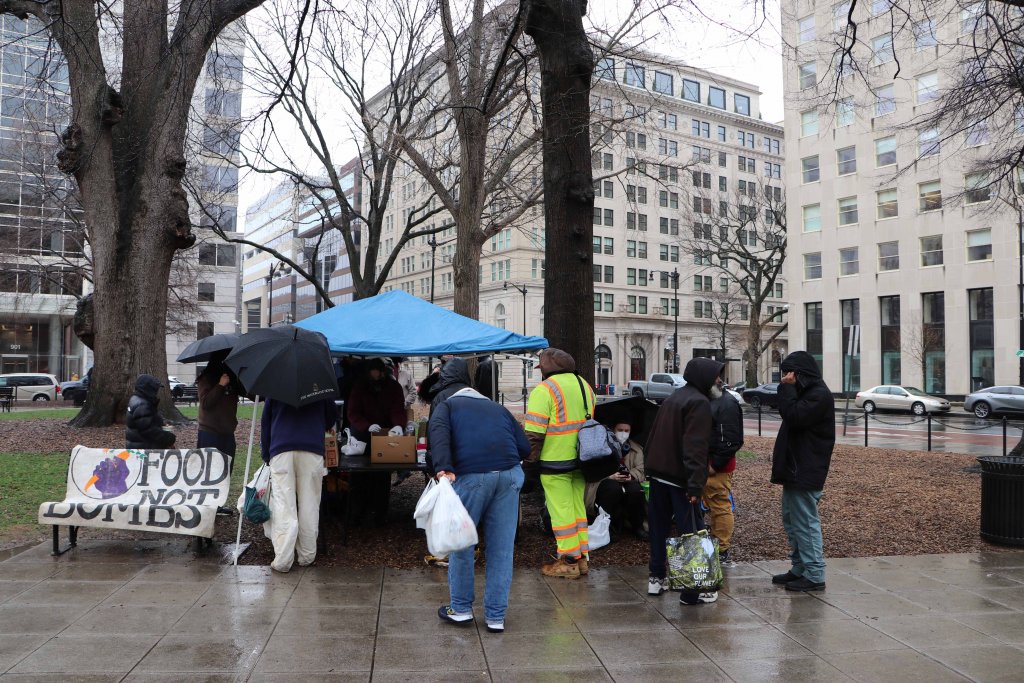








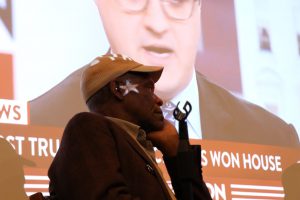



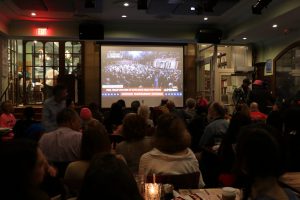






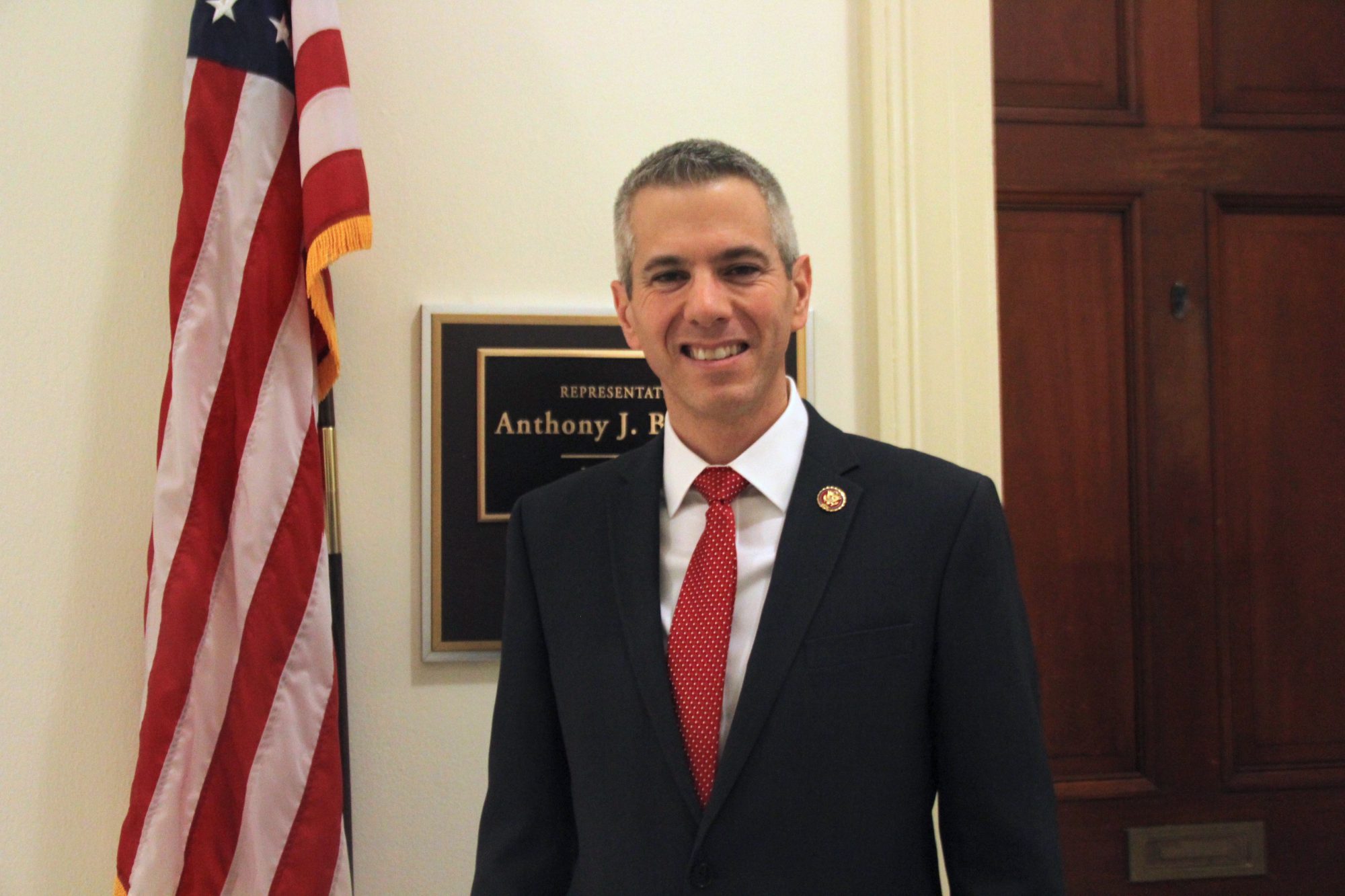
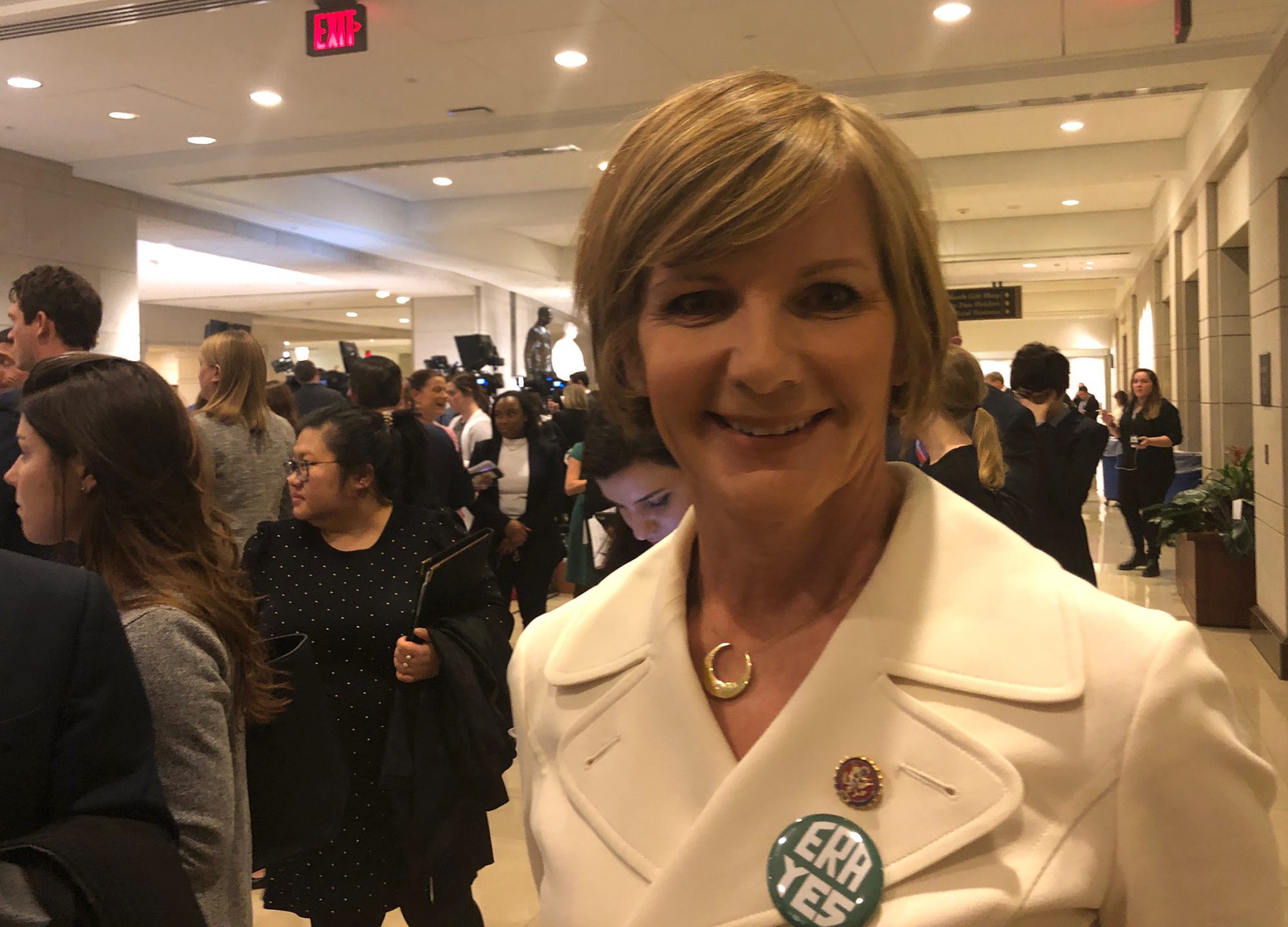
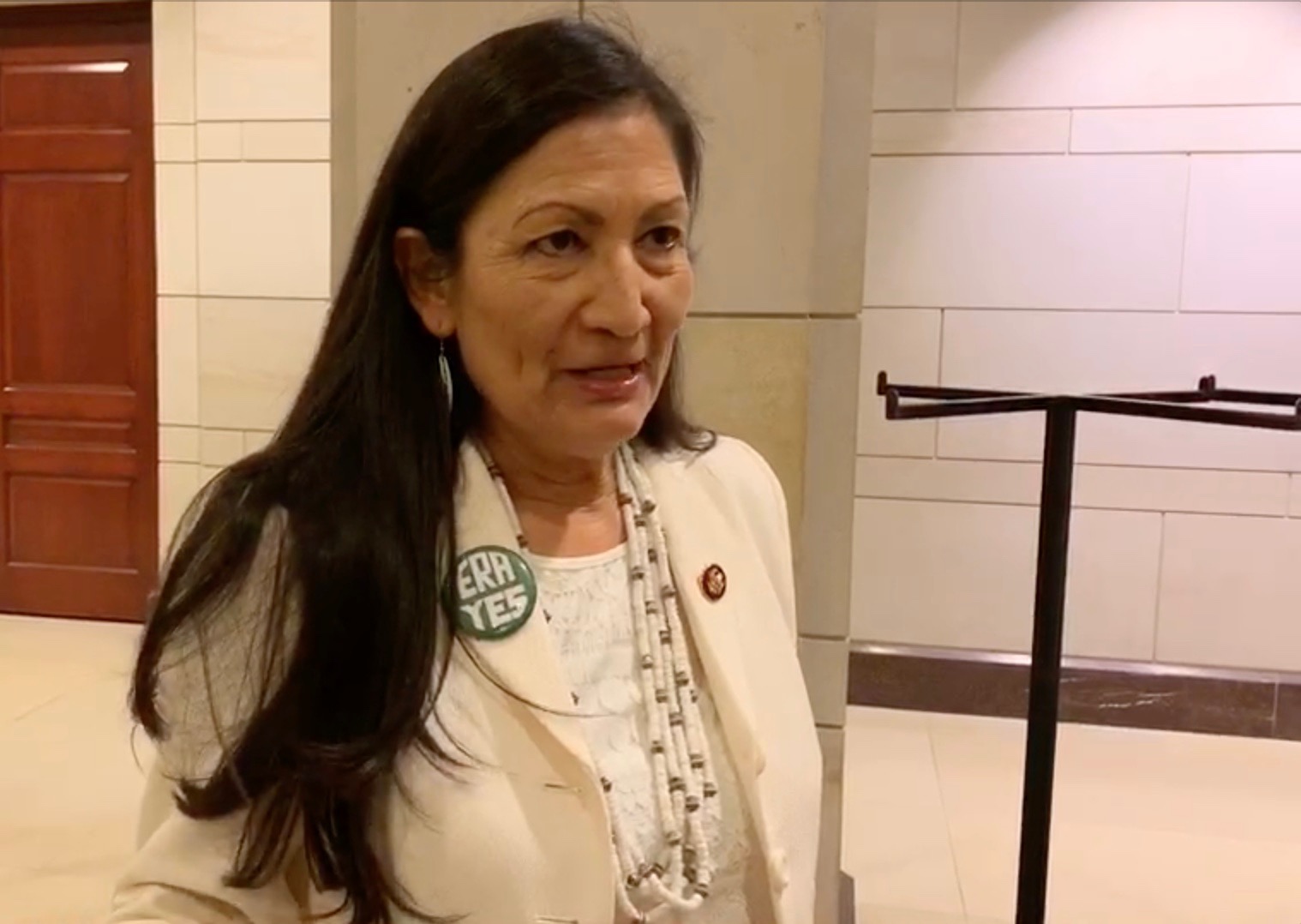



FreeHer protesters call on Biden to ‘Bring Moms Home’ from prisons and jails
by Sophia Didinova | April 25, 2024 | Featured, Living | 0 Comments
The peaceful protest emphasized that this Mother’s Day, nearly 150,000 incarcerated mothers will not be able to celebrate because they are separated from their children.
How TikTok catapulted Louisiana climate activists into the political spotlight
by Clare Zhang | April 10, 2024 | Environment, Featured, Topics | 0 Comments
In January, the Biden administration announced a pause on approvals of proposed liquefied natural gas projects after one popular TikTok creator traveled to southwest Louisiana to capture some of the residents’ stories.
Video: Black farmers weary as equity bill stalls in Congress
by Ellie Skelly | April 2, 2024 | Featured, Politics | 0 Comments
Third-generation farmer Ralph Morton said he hopes the Justice for Black Farmers Act – which offers equity and social justice for Black farmers – is included in the new Farm Bill.
Biochar Is ‘Low-Hanging Fruit’ for Sequestering Carbon and Combating Climate Change
by Lindsey Byman | April 2, 2024 | Environment, Featured, Topics | 0 Comments
Made from heating wood and other biomass at high temperatures with no oxygen, biochar mixed in soils dominated the carbon offset marketplace last year in tons of warming gases absorbed from the atmosphere.
Gen Z looks for more financial guidance and protection amid rising debt and consumerist culture
by Alicia Tang | March 27, 2024 | Business, Featured | 0 Comments
Those born between 1997 and 2012 have grown up online with easy access to purchasing and money. Consumer advocates say Gen Z now faces unique economic headwinds.